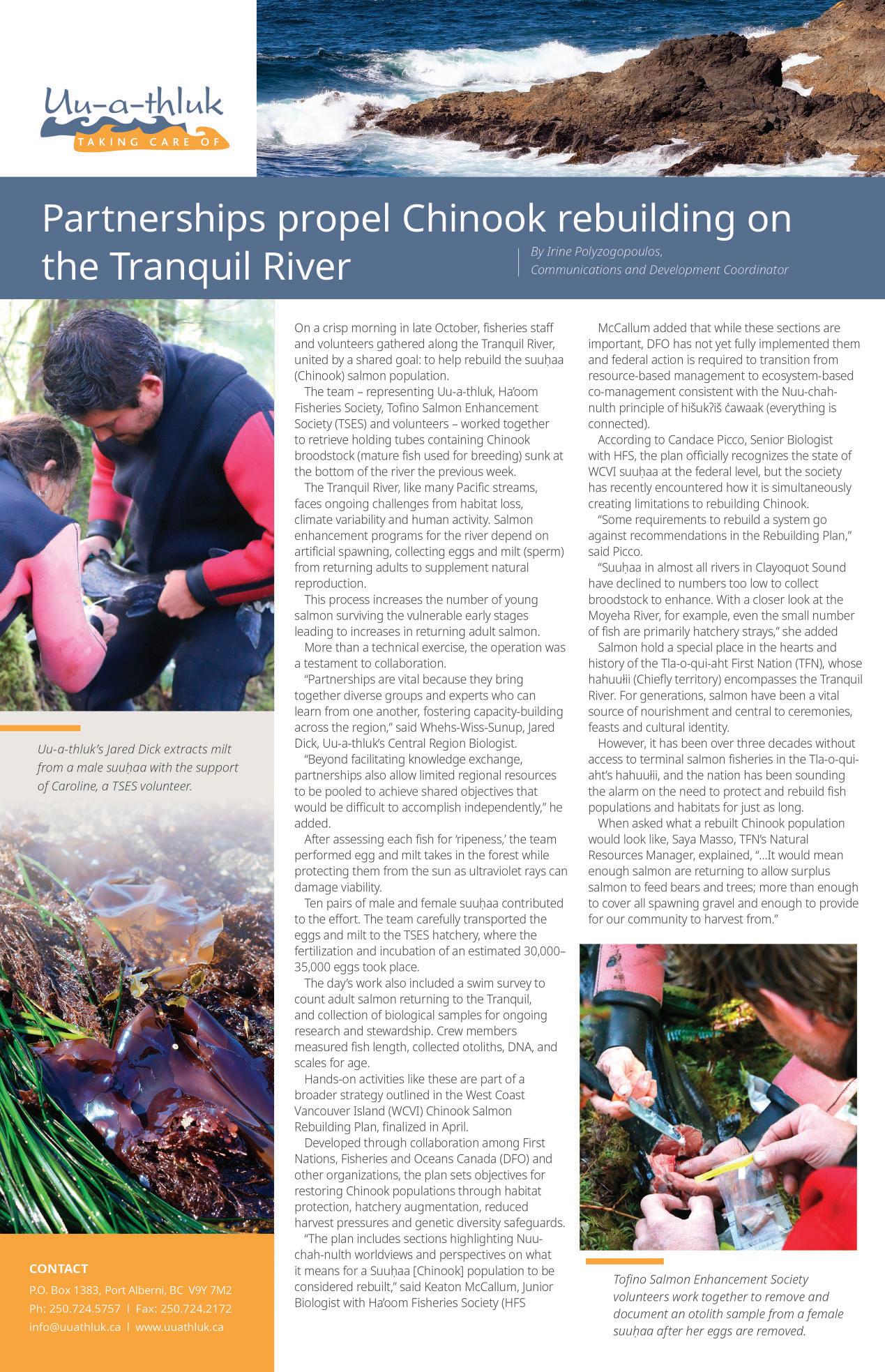

INTERESTING NEWS

West Coast General staff shortage causes ICU closure
Intensive care unit temporarily closed, forcing Port Alberni patients on life support to be transferred elsewhere
By Eric Plummer Ha-Shilth-Sa Editor
Port Alberni, BC - A staffing shortage has forced the West Coast General’s ICU to close, meaning those taken to the hospital with life-threatening ailments will be transported out of Port Alberni to intensive care units elsewhere.
“This is a temporary measure until adequate nursing, allied health and physician staffing levels are in place for the ICU,” stated Island Health, noting that the closure began Nov. 20 at the Port Alberni hospital.
Announced to the public just one day before, the decision was made after discussions from the hospital’s leading doctors determined an ICU closure was needed “to uphold safe patient care and support staff in delivering the best care possible.”
“Based on these discussions and a request from ICU physicians, Island Health is temporarily adjusting services for the three-bed ICU at WCGH,” stated Island Health.
This means that, for the time being, those taken to the Port Alberni hospital who require the highest level of life support will be transported to another facility by Emergency Health Services – either by ground ambulance or helicopter.
“They will be stabilized at WCGH and transferred to the most appropriate hospital, following emergency transfer processes,” said Island Health. “It is expected that most patients will be transferred to the new, state-of-the-art ICU and Nanaimo Regional General Hospital.”
Before the ICU closure, approximately 30 per cent of these critical patients were already transferred to a higher level of care in another medical facility. Most of these transfers are to Nanaimo Regional General, which in recent years has tripled its ICU capacity.
Meanwhile, the Port Alberni’s Hospital’s emergency department will continue to operate, and “internal medicine” physicians who normally work in the ICU will be there to support patients, said the health authority. Serving a large region that stretches out to communities on Vancouver Island’s west coast, West Coast General’s emergency department sees an average of over 50 patients a day.
On Nov. 20 Mid-Island Pacific Rim MLA Josie Osborne acknowledged the concern many across the region will have after hearing of the ICU closure.
“I want to recognize how stressful this is for people in the community,” said Osborne in an online message from the B.C.

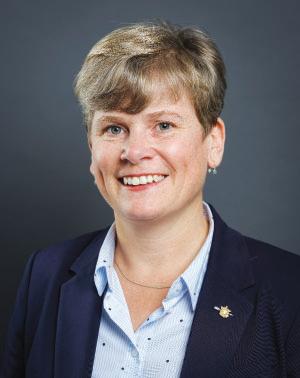
legislature in Victoria.
Osborne, who is also B.C.’s minister of Health, assured the region’s residents that the West Coast General will still be ready to receive patients.
“The emergency department remains ready to respond as normal,” she said.
“There are contingency plans to place, and I want to ensure everyone that West Coast General is well versed in safe transfer practices for patients who need intensive care.”
These transfers are provided by Emergency Health Services, but Port Alberni’s paramedics are already challenged in a community that continues to deal with a
high rate of drug overdoses. Last December the Port Alberni RCMP ended up transporting a stabbing victim to the hospital when there wasn’t an ambulance available.
“BC Ambulance Service were busing on other calls and unable to immediately attend,” stated a release from the Port Alberni RCMP, issued Dec. 16, 2024. “A police officer carried the victim out of the two-storey building and rode in the back seat while attempting to keep pressure on the victim’s wounds.”
“The male was stabilized at hospital before being transported out of the community for additional medical treatment,” added the RCMP.
Emergency Health Services was “heavily involved” in conversations about how the ICU closure would be handled, and will add more paramedics to deal with the transfers from the Port Alberni hospital.
“Given the temporary closure of the ICU beds and the impact on the community, we have taken immediate steps to temporarily add additional paramedic resources to Port Alberni to help support coverage for 911 calls and transport resources,” said BCEHS in an email to Ha-Shilth-Sa. “As BCEHS is a provincial ambulance service, with no municipal boundaries, we can move resources as needed. BCEHS air ambulances may also be used to transport patients with more acute medical needs.”
Osborne said that support will be available for those taken elsewhere for critical medical treatment.
“I can assure you that people and their loved ones will be fully supported by social workers, clinical teams and discharge teams if transfers are required,” she said.
“Once transfer patients no longer need intensive care, they’ll be transferred back to the community where they can heal closest to home.”
The health minister also acknowledged that Port Alberni’s recent ICU closure is symptomatic of a widespread shortage in health care workers.
“Part of the bigger picture here is a health care workforce shortage. We are doing everything possible as a province to hire more staff,” said Osborne, noting international recruitment campaigns and measures being undertaken to “fast-track” the necessary credentials for medical professionals coming from the United States.
While announcing the ICU closure, Island Health stated that $4.1 million has been recently invested to hire the equivalent of 17 full-time staff for the West Coast General’s intensive care unit and emergency department. The health authority is “actively recruiting” nurse practitioners to support patients.
“We need more staff in Port Alberni as soon as possible. Island Health is working as fast as they can to do so,” said Osborne.
Chloe Wangler photo
As of Nov. 20, a staffing shortage has forced the West Coast General Hospital to close its intensive care unit.
Josie Osborne
Federal budget includes DFO spending ‘scale back’
With Carney’s first budget passed, the days of Fisheries and Oceans’ growing expenditures appear to be over
By Eric Plummer Ha-Shilth-Sa Editor
Ottawa, ON - The newly passed federal budget includes language to “wind down research”, “scale back” some programs and “reduce management layers” within Fisheries and Oceans Canada – part of plans to cut half a billion in the department’s expenses over the next four years.
Prime Minister Mark Carney’s first budget passed an evening vote on Nov. 17 by a close margin of 170-168, saving the Liberals from a confidence motion that would have triggered an election just months after the minority government was formed in the spring. Four MPs abstained from the vote to enable the budget to pass, including two each from the Conservatives and NDP. Courtenay-Alberni MP Gord Johns was among those who abstained, whose NDP party refused to support the budget while stating that now is not the right time for another election amid the economic uncertainty facing the country.
Interim NDP Leader Don Davies stated that the spending plan “fails to meet the moment” that Canadians are facing.
“While there are elements of the budget which reflect our concerns, on the whole it is a conservative budget,” he said in a release, noting that it’s also clear that Canadian do not want an election right now. “The consequence of defeating this budget would not be to improve it or to help Canadians. It would be to plunge the country into an election only months after
the last one, and while we still face an existential threat from the Trump administration.”
Under a $78.3 billion deficit projected for this year, on Nov. 4 the Liberals introduced the plan as “an investment budget” that spends more on “nation-building” infrastructure and less on government operations. The $500 million in cuts to DFO programs and services over the next four years are part of a larger plan to reduce Canada’s civil service by 16,000 positions.
This year Fisheries and Oceans Canada has an annual budget of $6.05 billion, with the equivalent of 14,747 full-time staff. In recent years DFO has benefitted from a steady increase in overall funding, growing from $3.78 billion over the 2022-23 fiscal year, but this spending on the department’s “core responsibilities and internal services” is now projected to decline to under $5 billion by 2028.
“To meet up to 15 per cent savings targets over three years, the Department of Fisheries and oceans will wind down research and monitoring activities that have either achieved their objectives or for which alternative data sources exist, scale back certain policy and program capabilities, reduce management layers, and right-size internal services,” states the Government of Canada.
And what does “right size” mean? This terminology leads to the expanded use of artificial intelligence to “modernize Canada’s fisheries management system”.
“Reducing the use of burdensome paper-

based tools will free up time for fisheries officers to spend in communities and on the water enforcing fisheries regulations,” states the budget.
Covering the country’s three coasts, DFO’s mandate includes fisheries management, supporting aquatic ecosystems, marine navigation and the Canadian Coast Guard. Over the past three years fisheries spending has dramatically increased, growing from $1.08 billion in 2022-23 to $1.41billion this year with 3,848 dedicated staff. But funds allocated for fisheries management are set to drop to $744 million in the 2027-28 fiscal year.
Back in June, while addressing the Nuuchah-nulth Council of Ha’wiih Forum on Fisheries, a long-serving DFO biologist spoke of the approaching fiscal restraints
facing the federal department. As section head for Aquatic Ecosystems and Marine Science, Sean MacConnachie presented survey data illustrating the exponential growth of sea otter populations across the B.C. coast – a phenomenon that many Nuu-chah-nulth leaders see as a threat to shellfish. Since 1977 DFO has conducted widescale counts of the voracious pinnipeds, but funding for such measures is uncertain.
“A good chunk of that funding is up for renewal at the end of this fiscal year with the Nature Legacy funding,” explained MacConnachie. “As we all know, we have a new government and the prime minster is setting new priorities, including a cap to the public service. There’s going to be lots of changes in my staff.”
With 27 years in DFO, MacConnachie reflected on future limitations to monitoring if the federal department is forced to tighten its spending. Sea otters will continue to grow across the coast, and have recently been found as far south as Neah Bay in Washington State, but the biologist admitted that his team does not have the resources to do an entire populationwide survey. He thanked Nuu-chah-nulth representatives for contributing data to what DFO is able to gather on sea otters, or kwakwat in Nuu-chah-nulth.
“My ability as a manager of that program to be able to hire or rehire is going to be really, really difficult,” he said. “I don’t know how I’m going to manage the science for this, given what will change.”
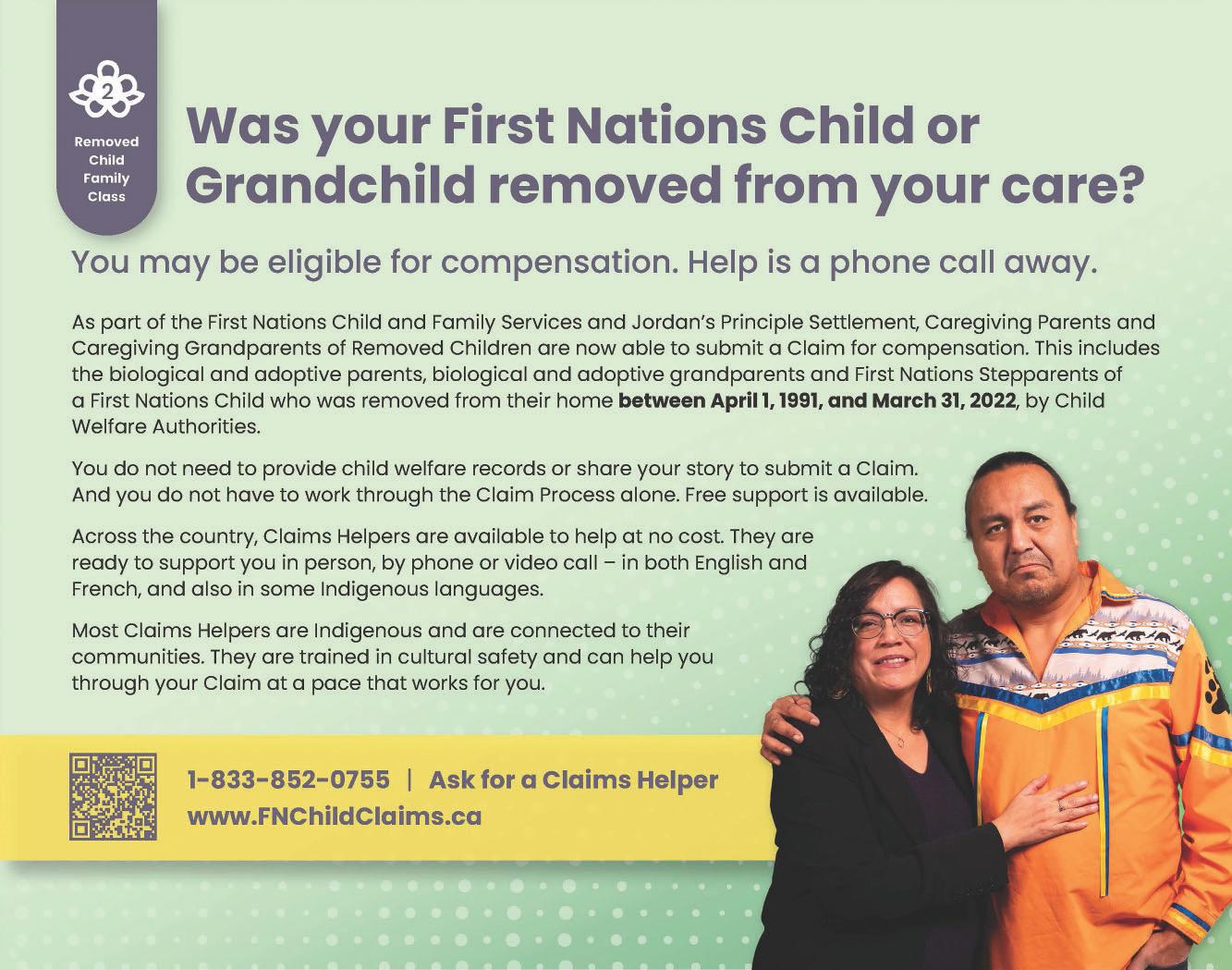
Don Davies
Leaders frustrated, call for immediate action on ICU
Health minister discusses need for recruitment and retention of health care professionals in the Alberni Valley
By Eric Plummer Ha-Shilth-Sa Editor
Port Alberni, BC - The Alberni Valley’s First Nation leaders are “extremely concerned, sad, frustrated and disappointed” by the temporary closure of West Coast General’s ICU, and are calling for measures to immediately restore intensive care at the hospital.
On Nov. 20 the three-bed intensive care unit closed for an indeterminate period of time, after leading physicians at the hospital decided that this measure was necessary due to an ongoing staffing shortage. For the time being, patients requiring lifesupport from the ICU will be transported by ambulance or helicopter to another health facility – which in most cases will be the Nanaimo Regional Hospital, according to Island Health. The Nanaimo hospital’s ICU has a capacity 10 times that of the West Coast General unit.
“[I]f there are not enough resources to ensure proper staffing, equipment and other requirements to keep an ICU open at a hospital, then emergency measures must be taken by the Ministry of Health and the Province of British Columbia,” reads a joint press release from the Hupacasath First Nation, Tseshaht First Nation and the Nuu-chah-nulth Tribal Council. “Additional stress and pressure on WCGH and other facilities such as Nanaimo General Hospital will only result in making things worse.”
The Nuu-chah-nulth leaders also criticized Island Health’s means of communicating the ICU closure. The health authority’s initial Nov. 19 press release doesn’t mention the closure until halfway through the document, calling it “temporary service adjustments” after first listing past initiatives to improve services at West Coast General.
“Yesterday’s statement from Island Health lacks humility and accountability,” stated the joint Nuu-chah-nulth
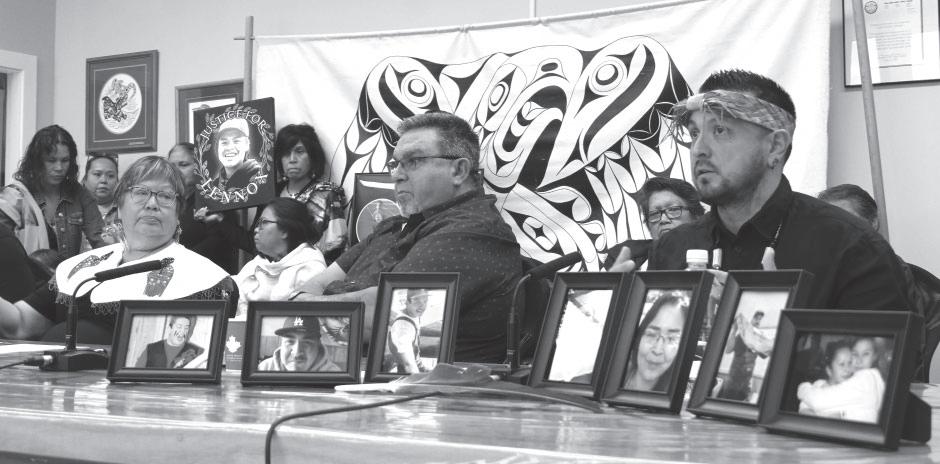
Nuu-chah-nulth Tribal Council President Judith Sayers (seated on the left), NTC Vice-President Les Doiron and Tseshaht Chief Councillor Ken Watts are among those calling for immediate measures to restore ICU services at the West Coast General Hospital. They are pictured from September 2024 while declaring a state of emergency due to the ongoing drug crisis.
release. “Comments such as, ‘This temporary change is not expected to impact the quality of patient care at WCGH’ are unacceptable when we know people’s health will be seriously impacted by these bed closures; not if, but when. Taking ownership and responsibility are key values and principles our people take very seriously.”
On Friday, the day after the ICU closure, Minister of Health Josie Osborne met with leaders from Hupacasath, Tseshaht, the NTC, the City of Port Alberni and the regional district. Osborne, who is also the MLA elected to represent the region, called this “a productive and solutionsfocused conversation”.
“I felt there was strong agreement on taking an ‘all hands-on-deck’ approach to improving communication, collaborating with Island Health, and working together on recruitment and retention for the Al-
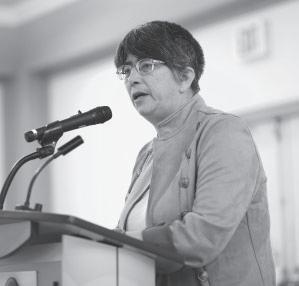
berni Valley – not just for the West Coast General Hospital but also communitybased family doctors and other community-based healthcare professionals.”
How to get more medical professionals working in the Alberni Valley remains an issue, where there are 642 residents for
each of the 41 family doctors listed by the College of Physicians and Surgeons of B.C. As of Nov. 24 Island Health had listed 60 job openings in the West Coast General Hospital alone.
“As Nuu-chah-nulth we must try to remain optimistic, that our MLA and Minister of Health Josie Osborne will do everything in her power to fix this serious situation that may impact the health and well-being of people on the West Coast,” said NTC President cloy-e-iis, Judith Sayers.
“We also want to remind everyone that local nurses, doctors and staff are not to blame for this closure,” added Tseshaht Chief Councillor waamiiš, Ken Watts, in the press release. “Let these moments of frustration help us unite as human beings and advocate and lobby for everyone who deserves proper care.”
Port Alberni ranks second lowest living wage in B.C.
By Karly Blats
Ha-Shilth-Sa Contributor
Port Alberni, BC - Port Alberni has the second lowest living wage in the province, according to a recent report by Living Wage BC.
The 2025 report shows Port Alberni’s living wage at $22.60—the hourly amount that someone needs to earn to meet their basic expenses (including rent, food and transportation). Government taxes, credits, deductions and subsidies are taken into account and it does not include debt repayment or savings for future plans.
The living wage is calculated using a 35-hour working week. Family types used to calculate the wage are a single adult, a single parent with one child and a family of four with two adults and two children. These are then weighted by their prevalence in the population to produce a single living wage for Port Alberni. Port Alberni is just above Grand Forks ($21.55) and lower than the remaining 25 communities in B.C. listed. Whistler has the highest living wage at $29.60, Metro Vancouver is $27.85 and Greater Victoria is $27.40. Minimum wage in B.C. is $17.85 an hour.
The 2025 report did not include Tofino and Ucluelet’s living wage, but a 2024 living wage report from the Clayoquot Biosphere Trust showed the area’s living wage at $27.40 an hour, which was the
second highest in B.C at that time.
According to the 2025 Living Wage report, earning a sustainable amount is essential for low-wage workers who often face the difficult choices of buying groceries or heating their homes, paying bills or making rent on time.
Michael Ramsay, major with the Salvation Army which runs the Bread of Life Centre on Third Avenue, said rising costs of essentials like food and shelter have caused a spike in seniors accessing the shelter and soup kitchen.
“We’ve noticed a really big spike of seniors who are at our soup kitchen on a daily basis and we’ve seen a spike of seniors who have to stay in our shelter…and that is all cost-of-living based things,” Ramsay said. “Folks who are on set incomes, who were able to make it before, are now in situations for the first time in their lives where they have to go to a soup kitchen or a food bank or even a shelter.”
Ramsay said stats show a 70 per cent increase in seniors accessing services through the Bread of Life Centre over the last year. Meal counts for seniors this year are just under 11,000 served.
In the previous 18 months, through services available at the Bread of Life, 23 people who were previously homeless were housed. They served more than 144,500 meals from the soup kitchen and 11,000 from their food truck.
In addition, the Bread of Life served
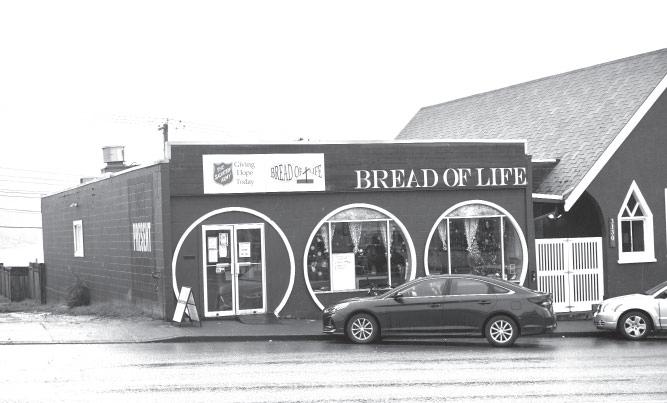
The Bread of Life Centre on Third Avenue served more than 24,000 meals to First Nations individuals in the last year and a half.
more than 24,000 meals to members of First Nations communities in the last year and a half.
The Bread of Life centre not only offers daily meals to those in need, but a 25-bed shelter and an additional 20-bed extreme weather response shelter. Ramsay said the shelter is at capacity on most nights, with weather and timing of financial supports for clients playing a factor.
Recently, the temporary-use permit for the shelter expired; therefore Port Alberni city council had to decide whether to renew the permit for another three years.
City council voted unanimously on Nov. 24 in favour of the renewal.
“In my mind I can’t come to a point where I think a building and service that houses people, feeds people and keeps people safe and off the street in our community is anything other than a help to our community,” said Port Alberni Mayor Sharie Minions.
The most recent homeless count shows there are at least 180 people in Port Alberni without a home.
According to Living Wage BC, nearly one in three workers in B.C. earn less than the living wage. Women and racialized workers are disproportionately affected and jobs in food service, retail and agriculture are among the lowest paid.
Eric Plummer photo
Brandy Lauder
Ha-Shilth-Sa newspaper is published by the Nuu-chah-nulth Tribal Council for distribution to the members of the contributing First Nations, as well as other interested groups and individuals.
Information and original work contained in this newspaper is protected by copyright and may not be reproduced without written permission from:
Nuu-chah-nulth Tribal Council P.O. Box 1383, Port Alberni, B.C. V9Y 7M2.
Telephone: (250) 724-5757
Fax: (250) 723-0463
Web page: www.hashilthsa.com facebook: Hashilthsa Ntc
2025 Subscription rates:
Non-Nuu-chah-nulth, Ahousaht, Ehattesaht,Toquaht and Ucluelet members are subject to a yearly subscription fee of $40 in Canada, $50 in the US and $60 for overseas. Payable to the Nuu-chah-nulth Tribal Council
Manager/Editor/Reporter
Eric Plummer (Ext. 243) (250) 724-5757 Fax: (250) 723-0463 eric.plummer@nuuchahnulth.org
Reporter
Denise Titian (Ext. 240) (250) 724-5757 Fax: (250) 723-0463 denise.titian@nuuchahnulth.org
Reporter Nora O’Malley (604) 353-8488 nora.omalley@nuuchahnulth.org

Audio / Video Technician
Mike Watts (Ext. 238) (250) 724-5757 Fax: (250) 723-0463 mike.watts@nuuchahnulth.org
Editorial Assistant
Holly Stocking (Ext. 302) (250) 724-5757 Fax: (250) 723-0463 holly.stocking@nuuchahnulth.org
DEADLINE:
Please note that the deadline for submissions for our next issue is Dec 5. 2025
After that date, material submitted and judged appropriate cannot be guaranteed placement but, if material is still relevant, will be included in the following issue.
In an ideal world, submissions would be typed rather than hand-written. Articles can be sent by e-mail to holly.stocking@nuuchahnulth.org (Windows PC).
Submitted pictures must include a brief description of subject(s) and a return address.
Pictures with no return address will remain on file. Allow two - four weeks for return.
Photocopied or faxed photographs cannot be accepted.
COVERAGE:
Although we would like to be able to cover all stories and events, we will only do so subject to:
- Sufficient advance notice addressed specifically to Ha-Shilth-Sa.
- Reporter availability at the time of the event.
- Editorial space available in the paper.
- Editorial deadlines being adhered to by contributors.
LETTERS and KLECOS
Ha-Shilth-Sa will include letters received from its readers. Letters MUST be signed by the writer and have the writer’s full name, address and phone number on them. Names can be withheld by request. Anonymous submissions will not be accepted. We reserve the right to edit submitted material for clarity, brevity, grammar and good taste. We will definitely not publish letters dealing with tribal or personal disputes or issues that are critical of Nuu-chah-nulth individuals or groups. All opinions expressed in letters to the editor are purely those of the writer and will not necessarily coincide with the views or policies of the Nuu-chah-nulth Tribal Council or its member First Nations. Ha-Shilth-Sa includes paid advertising, but this does not imply Ha-Shilth-Sa or Nuu-chah-nulth Tribal Council recommends or endorses the content of the ads.
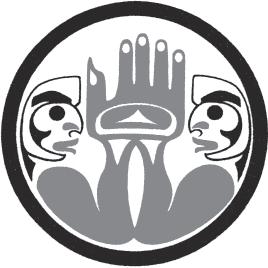

“Unnecessary medical appointments take time away from patients who need to see their doctors and nurses, don’t help people get better any faster and risk further spread of illness,” says Jennifer Whiteside, minister of Labour.
Province eases sick note requirements
An employee can miss up to five days of work without requiring a doctor’s note
By Denise Titian Ha-Shilth-Sa Reporter
It’s flu season and you’re starting to feel achy, tired and your throat is a little sore. The mental juggling starts – do you go to work and risk spreading illness to other workers? Do you call the doctor…if you have one, and hope you can get that doctor’s note so you can take time off to recover? Maybe you think about going to a walk-in clinic or hospital emergency to get that note – but there’s sick people there and wait times are hours long.
Workers in British Columbia no longer face this dilemma with new rule changes at the Employment Standards Branch.
Effective immediately, employers can no longer require doctor’s notes for employees with short-term illnesses like colds or flu.
“When you’re sick with the flu, or your child comes down with a cold, the last thing you should have to do is go to your doctor or a medical clinic to get a piece of paper saying you’re sick,” said Jennifer Whiteside, minister of Labour. “Unnecessary medical appointments take time away from patients who need
to see their doctors and nurses, don’t help people get better any faster and risk further spread of illness.”
According to the Ministry of Labour, the new employment standards regulations state that employers cannot ask for a sick note for a worker’s first two health-related, short-term absences of five consecutive days or fewer in a calendar year. The new changes also cover dependants of the employee, like children, who may need a parent to stay home to care for them.
The new changes were based on input from healthcare providers and will ease some of the strain on the provincial system, allowing more time for medical professionals to spend with patients. It will also reduce the administrative burden on the healthcare system.
“No one should have to choose between their health and their job,” said Josie Osborne, minister of Health. “These new rules ensure that when people are unwell, they can stay home to recover and help prevent the spread of illness without the added stress of getting a sick note. This change also reduces unnecessary administrative burdens for doctors and allows them to focus on what matters most:

Ha-Shilth-Sa belongs to every Nuu-chah-nulth person including those who have passed on, and those who are not yet born. A community newspaper cannot exist without community involvement. If you have any great pictures you’ve taken, stories or poems you’ve written, or artwork you have done, please let us know so we can include it in your newspaper. E-mail holly.stocking@nuuchahnulth.org. This year is Ha-Shilth-Sa’s 51st year of serving the Nuu-chah-nulth First Nations. We look forward to your continued input and support. Kleco! Kleco!
providing care to patients.”
According to information from the province, the Canadian Medical Association estimates that in 2024 B.C. doctors wrote approximately 1.6 million sick notes. The CMA along with Doctors of BC called for the elimination of sick-note requirements for employees taking a short-term absence from work due to illness or injury
The new regulations set a minimum standard and apply to all employees covered by the Employment Standards Act.
Information on the Employment Standards website says regulations will be established following engagement with stakeholders.
“Regulations will set out how many days is considered a short-term absence, and how often an employee may be absent before their employer can request a formal sick note,” they stated.
While the initial thrust of the regulations will deal with notes from doctors and nurse practitioners, the regulations may also consider notes from other health professionals, they go on to say.
Legal Information
The advertiser agrees that the publisher shall not be liable for damages arising out of errors in advertisements beyond the amount paid for space actually occupied by the portion of the advertisement in which the error is due to the negligence of the servants or otherwise, and there shall be no liability for non-insertion of any advertisement beyond the amount paid for such advertisements
Province of BC photo
Man’s last battle brings changes five years after death
Amendments are made to B.C.’s liver transplant guidelines, after an abstinence policy is deemed discriminatory
By Denise Titian Ha-Shilth-Sa Reporter
Vancouver, BC – While he didn’t live long enough to benefit from his win over British Columbia’s organ transplant rules, David Dennis’ victory five years after his death will benefit Indigenous people on waitlists into the future.
David Dennis, a Huu-ay-aht father of five, was known for his work as a First Nations activist, and he served as Southern Region co-chair at the Nuu-chahnulth Tribal Council. As a young man, Dennis joined the Native Youth Movement rallying against the B.C. treaty process. He later started up the West Coast Warrior Society to continue fighting for Indigenous title and rights in a more direct, assertive style, according to fellow Warrior, Terry Dorward.
But the West Coast Warrior Society eventually disbanded. Dennis went on to work for and with Indigenous organizations, taking a less confrontational approach in his fight for the rights of his people.
In June of 2019 Dennis was diagnosed with end-stage liver disease. In urgent need of a life-saving liver transplant, Dennis was referred to the BC Transplant, a program of the Provincial Health Services Authority. BC Transplant oversees all aspects of organ donation and transplant across the province and manages the BC Organ Donor Registry. Following his assessment for transplant suitability Dennis received distressing news. He could not join the waitlist for a transplant because of a policy that required abstinence from alcohol for six months. When he received this news he had quit drinking since his diagnosis two months earlier, but the disease was progressing quickly.
Calling the policy discriminatory, Dennis, with the support of the BC Union of Indian Chiefs and the Frank Paul Society, filed a complaint with BC Human Rights Tribunal.
“The abstinence policy places Mr. Dennis’ health at risk, potentially fatally, by delaying his access to a transplant,” reads the complaint.
The Union of BC Indian Chiefs went on to say that the policy, “is also an affront to his sense of dignity, respect and self worth.”
By September 2019 BC Transplant said that they were changing the abstinence policy based on “new, emerging clinical evidence.” But for David Dennis, the policy change came too late for him, and he knew it.
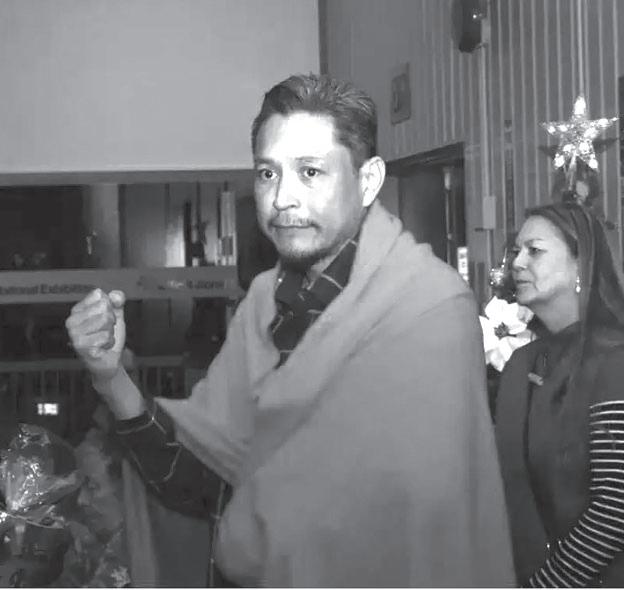
“They’ve changed their stance, which will benefit ultimately a lot of our kuu’us people because they won’t be faced with the same barriers,” he told Ha-Shilth-Sa in December 2019.
In November 2025 Dennis’ daughter, Somer McCarthy, received a call from her father’s lawyer “His complaint has now been officially settled,” she said.
McCarthy said the lawyer informed her that the provincial government settled the complaint before it went to the BC Tribunal Hearing, which was set to begin within days.
In a joint statement dated November 20, 2025, the Union of B.C. Indian Chiefs, Vancouver Coastal Health and PHSA confirmed that they had reached an agreement regarding class complaints made through the BC Human Rights Tribunal (BC HRT).
“Under the agreement, UBCIC will withdraw its complaints with the BC HRT and VCH and PHSA will make specific amendments to British Columbia’s liver transplant guidelines,” stated the parties.
Amendments to the guidelines are meant to ensure that if barriers to transplant eligibility and priority for Indigenous patients experiencing liver failure are identified, best efforts will be made


all patients with primary biliary cholangitis (PBC), auto-immune hepatitis (AIH), or other cholestatic liver diseases who are referred for transplant.
“PBC is an autoimmune disease disproportionately affecting Indigenous people, particularly coastal First Nations people, at approximately eight times the likelihood of non-Indigenous people, and nine out of 10 PBC patients are female,” stated the parties.
“Even though he is no longer here, this settlement confirms what he always knew – the system treated him unfairly and his voice made a difference,” said McCarthy.
But she is proud to say that it was his courage that forced the province to look at the harm these policies caused. This announcement, she said, proves that his life, his fight, created real change.
“As the recipient of a liver transplant myself, I am deeply proud of our joint work to ensure that Indigenous peoples have equitable access to liver transplantation,” said Grand Chief Stewart Phillip, UBCIC president.
“I take comfort because his voice made a difference. Even though he’s not alive, it will protect a lot of people,” said McCarthy.
to assist patients to mitigate or eliminate those roadblocks.
“This includes supporting Indigenous patients in accessing any needed psychosocial or financial supports throughout the referral, transplant eligibility review, and transplant processes,” reads the joint statement.
“[T]his fight came at huge cost to my father,” wrote McCarthy in an email to HaShilth-Sa. “He filed the complaint while he was given weeks to live, arguing that the abstinence policy was discriminatory and ignored the realities our people face. The impacts of colonization, trauma, intergenerational harm, and the lack of culturally safe healthcare. He stood up even while he was suffering because he knew other Indigenous families would walk this same path behind him.”
She went on to say that shortly after her father’s complaint was filed in 2020, he was placed on the BC Transplant wait list. But his illness rapidly progressed, and Dennis died in hospice on May 29, 2020, at the age of 45.
Through her tears, McCarthy told HaShilth-Sa that it is a relief that this is over. She said she and her siblings are sad but proud.
“Seeing change in policy brings pain and comfort at same time for all of us. My dad should still be here,” she said. The BC Transplant guidelines include policy changes that came as a result of new information. This includes knowledge that First Nations people have a genetic predisposition to liver diseases like primary biliary cholangitis, which is not caused by alcohol use.
According to the joint statement, guideline amendments were made concerning
His voice may even make a difference in the life of McCarthy’s infant daughter. Born earlier this year, McCarthy said her baby is Dennis’ first granddaughter – one that he never got to meet.
The UBCIC acknowledged David Dennis in a statement.
“[He] raised concerns about inequities with a liver transplant policy and fought courageously for fairness and equality in organ transplant rights until his passing in 2020,” said the organization.
“We recognize the historic harms and challenges Indigenous people have confronted and, in many cases, continue to face when accessing health care in B.C.,” said Penny Ballem, interim president and CEO of the Provincial Health Services Authority. “These changes reflect our commitment to reconciliation and our ongoing efforts to create a safe and equitable health care system that serves all people living in British Columbia.”
McCarthy said she and her siblings are proud of the fighter that their father was.
“My late father has helped move this province toward justice,” she said. “Our people will remember him not just as an activist but as a father and a community leader not just in our homelands but also the work he’s done on the Downtown Eastside in Vancouver and across Turtle Island.”
British Columbia is the first province to make this change, but McCarthy expects that this settlement agreement will be far-reaching.
“He was a warrior who never stopped fighting even when he was running out of time,” said McCarthy. “He told my mom, even if he changed one person’s life, that is what mattered to him.”

27
Eric Plummer photo
After being blocked from a donor list, David Dennis challenged BC Transplant’s policy of six-months of abstinence. That policy has since been changed.
Cities prepare shelter plan as icy weather approaches
More beds open when temperatures drop, but it’s never enough to house all in need, says Victoria manager
By Denise Titian Ha-Shilth-Sa Reporter
Vancouver Island, BC – With snow on the mountain tops and cold, wet nights chilling city streets, Vancouver Island’s most vulnerable – those with no place to call home, will be seeking out a warm place to sleep.
The helping agencies of Vancouver Island’s urban centres are preparing to open their warming centres and extreme weather emergency shelter beds.
Funded by the provincial government, there will be 771 extreme-weather response (EWR) shelter spaces provided.
“These 771 spaces open overnight when a community issues an extreme-weather alert, such as during cold temperatures, snow or heavy rain,” reads a provincial statement.
There is no comprehensive listing of these extreme weather response shelters, as it is the communities that determine what conditions necessitate an alert in coordination with BC Housing.
To find information about EWR shelters, people are advised to search local municipal information sources, like city websites and social media pages. Another source of information is local social service agencies and charitable organizations. EWR shelter spaces are available to be activated from Oct. 15, 2025, until April 15, 2026.
In Victoria, the island’s largest city, there are 1,749 homeless people, according to the 2025 Point in Time Count, conducted by the Homeless Services Association of British Columbia. The count took place in March 2025 and shows an increase in the number of people experiencing homelessness since 2023, when the number was 1,665.
The Victoria Native Friendship Centre is preparing to activate its additional support services for extreme weather events.
Diego Enciso, VNFC’s Shelter Program manager, says they offer 50 overnight shelter spaces this season.
“Twenty-five year-round beds and 25 additional temporary winter beds funded through the provincial winter response program,” said Enciso.
Shelters in the province can be low barrier, meaning people that are difficult to house can use the space. These people may be intoxicated, have high-risk mental health issues, or they may have a pet or partner. Enciso says the VNFC operates a high-barrier shelter, meaning guests
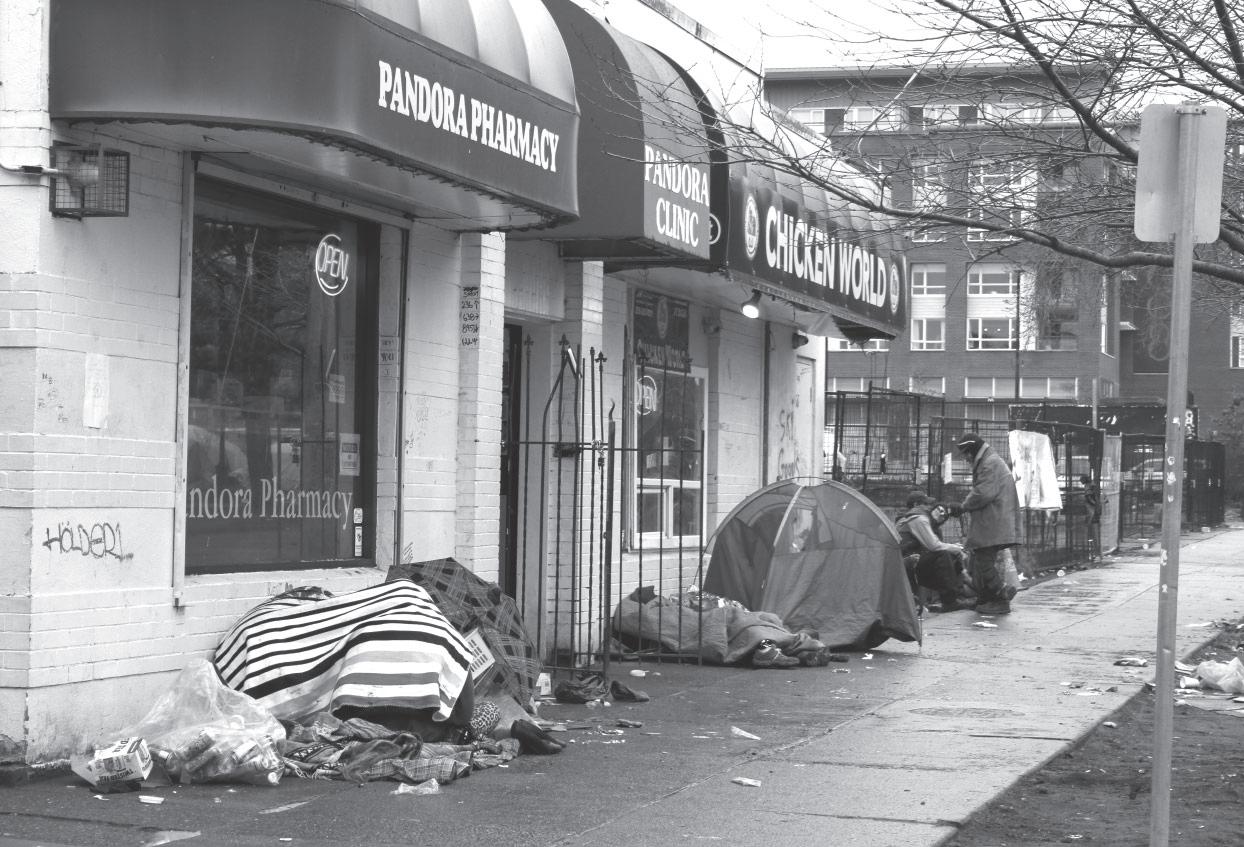
must meet certain expectations such as sobriety to ensure a safe environment for everyone.
Bread of Life permit extended
In Port Alberni the Bread of Life, run by Salvation Army, offers a soup kitchen, warming centre and 25 high-barrier beds. In extreme weather they open another 20 high-barrier beds. On Nov. 24 Port Alberni City Council met to decide whether they would approve the Bread of Life’s Temporary Use Permit. Without the permit, the Bread of Life would be forced to close the shelter portion of its operations.
Port Alberni also saw an increase in homelessness this year, according to the PiT Count. There are 180 people experiencing homelessness compared to 163 in 2023. Almost half of that number are Indigenous people who make up only 15 percent of the city’s population.
Located at 3130 Third Avenue in Port Alberni, the Bread of Life opened in 1983, starting out as food bank, drop-in centre, and soup kitchen. Today, it is a community hub where not only homeless people but also seniors and others gather to get warm, have a bite to eat and do crafts. Those in addictions or experiencing homelessness may go there to access services and support.
But concerns have been raised by some people and businesses in the neighborhood. They say that while they support the work that the Salvation Army does, they are not happy with the location due to its proximity to family homes and
businesses.
At the City Council meeting, several people in attendance urged the elected officials to approve the permit, pointing out that users of the Bread of Life rely on it as a safe, warm place to gather, to eat and sleep. The Bread of Life may not take in those who are under the influence of intoxicants.
The Harbourview Apartments are next door, a known hub for illicit drug users. It is this property, said residents at the city council meeting, that is the source of unlawful behaviour in the area. They argued that if the shelter closed, more people would be on the street and sleeping in business doorways.
In the end, Port Alberni City Council approved the Temporary Use Permit for the Bread of Life for a period of three years. In that time, Salvation Army may apply to have the 3rd Avenue property rezoned as a permanent solution. For winter 2025/26, Port Alberni’s Bread of Life will have its 25 overnight shelter beds available with an additional 20 beds opened up in extreme weather events.
Campbell River expands temporary housing
Campbell River is one of two Vancouver Island communities that has seen a decrease in homelessness counts. The other seeing a reduction is Parksville and Qualicum, which went from 103 to 94 in 2025.
Campbell River went from 197 homeless people in 2023 to 174 in 2025. Over

this period more than 40 new temporary housing units opened in the city. The city is planning to open an additional eight units before the end of the year.
Of those homeless people in the most recent count, 58 percent identified as Indigenous, while this designation makes up only 10 per cent of the city’s population.
Campbell River’s extreme weather planning includes the activation of a warming centre to support vulnerable residents during the winter season. Located at 401 11th Avenue, the Campbell River Warming Center provides hot drinks, snacks, and seating, but beds are not available.
The Evergreen Emergency Shelter in Campbell River offers 22 shelter beds year-round.
“The warming centre is activated when certain provincial criteria are met,” stated Evergreen. “The centre may be activated overnight at the city manager’s discretion when Environment Canada forecasts temperatures of -4°C or lower, or when there is a forecast low of 0°C or colder within 24 hours with an Environment Canada weather warning.”
The operation of the warming centre is a collaborative effort involving Campbell River city staff, local social service organizations, volunteers, and contractors. Funding for the warming centre is provided by the province through Emergency Management Climate Readiness, with additional support from the city.
Most shelters and charities welcome donations of food, blankets, warm clothing like socks, gloves, coats, and hats. Personal hygiene supplies are also needed.
The Victoria Native Friendship Centre says anyone needing shelter in their city may call 250-886-1360.
While the number of shelters increase during extreme weather, there are never enough spaces.
“As in many communities across the region, demand for safe, warm shelter rises sharply during extreme weather,” said Diego Enciso of VNFC. “While our expanded winter capacity is helpful, there continues to be a need for more long-term, stable shelter options to meet community needs throughout the season.”
For more information about shelters and extreme weather resources for homeless people, type 211 on your web browser.
This will bring you to a website that can connect you with emergency services in your community.

Eric Plummer photo
In Victoria, the island’s largest city, there are 1,749 homeless people, according to the 2025 Point in Time Count. Pictured are tents on Pandora Avenue.
Food insecurity hits high of 25.5 per cent, says report
Registered dietician Rachel (Dickens) Greening says that number is likely higher for Indigenous communities
By Nora O’Malley Local Journalism Initiative Reporter
Vancouver Island, BC – Food insecurity has reached a record high of 25.5 per cent in Canadian households, according to the latest Canadian Food Sentiment Index report published by the Agri-Food Analytics Lab at Dalhousie University.
Another recent report from Island Health shows one in five Vancouver Island residents were concerned about food security.
Nuu-chah-nulth Tribal Council dietician and diabetes educator Rachel (Dickens) Greening thinks those numbers are probably even higher for Indigenous communities.
“Colonization is directly linked to food insecurity. It has resulted in deep poverty for our people,” said Greening, who is of Ts’msyen (Tsimshian) First Nations and Hong Kong descent.
“There are so many examples, like we weren’t allowed to go to university, we weren’t allowed to leave the reserve, we weren’t allowed to sell our fish. There are so many reasons why we are behind in that respect,” she said.
“And for many, the residential school system has really impacted our relationships with food. Our traditional foods were vilified. We were taught that European foods are better and healthier and they are not dirty like traditional foods,” Greening continued.
She brought up the malnutrition experiments that took place across the country in several residential schools.
“They identified that children attending the school were malnourished and instead of feeding them they were used as control subjects. It’s so sad,” said Greening.
In 2013 Ian Mosby, a food historian and postdoctoral fellow at the University of Guelph in Ontario, made headlines across the country on this issue. His academic article ‘Administering Colonial Science’ revealed details of how the Department of Indian Affairs of Canada performed medical atrocities on close to 1,000 Aboriginal children at six residential schools between 1942 and 1952.
These institutions included the Alberni residential school in Port Alberni, B.C.; the St. Mary’s and Cecilia Jeffrey schools in Kenora, Ontario; the Schubenacadie school in Shubenacadie, Nova Scotia; and the St. Paul’s and Blood schools in Southern Alberta near Lethbridge, according to Mosby.
“The investigations employed a variety of different experts, ranging from nutrition professionals, doctors, and nurses to dentists, photographers and lab technicians,” Mosby wrote. “Research included medical and dental examinations, blood tests, and intelligence and aptitude tests, as well as collection of menu and dietary records from each of the schools.”
At the Alberni Indian Residential School, Mosby reported that “the diets of the children were lacking in vitamins A, B, and C and iodine because they were not being provided with enough foods like milk, fruit, vegetables, eggs, cheese, and iodized salt” and that the Indigenous children at Alberni had the highest rates of riboflavin (B2) deficiency.
The increased rates of riboflavin deficiency at Alberni led to an experiment that tested the effects of tripling milk consumption on vitamin levels. However, inadequate milk consumption continued for two more years to provide researchers with a baseline measure they could use to evaluate the results of the study, Mosby wrote.


At St. Mary’s School, Mosby’s research revealed that a “Newfoundland Flour Mix” was introduced to the diets of Indigenous children – a product that could not be legally sold outside of Newfoundland under Canada’s laws against food adulteration because it contained added thiamine, riboflavin, niacin, and bonemeal.
The flour provided no benefits to the children, and the incidences of anemia exponentially grew shortly after the flour was introduced to the school diet, Mosby reported.
“These experiments therefore must be remembered and recognized for what they truly were: one among many examples of a larger institutionalized and, ultimately, dehumanizing colonialist racial ideology that has governed Canada’s policies towards and treatment of Aboriginal peoples throughout the twentieth century,” Mosby concluded.
Greening says other contributing factors to food insecurity amongst Indigenous people include a loss of territory diminishing the capacity to harvest traditional foods as well as climate change.
“Clams can only be harvested small windows of the year because of the red tide, which is linked to warmer waters,” she said. “There are lots of reasons why we can’t eat our traditional foods.”
Changing the narrative
Greening says many nations are doing amazing work to revitalize Indigenous food sovereignty; Some initiatives in-
clude building community gardens and mentoring youth in seasonal harvesting practices like hunting seal.
“That is food security and that is food sovereignty. They are getting food from a source that is abundant and then distributing it out to the community,” said Greening.
At the Wickaninnish Community School in Tofino within the traditional territory of Tla-o-qui-aht First Nation, chef Ron Weeks feeds 180 students from kindergarten to Grade 7 a daily lunch and healthy snacks under a monthly “pay as you can” model. Every month, he sends an envelope with a menu inside, and parents return it with a contribution that fits their budget.
Lunch program funding and food is
also supported by the Pacific Rim School District 70 Feeding Futures School Meal program, Tofino Co-op, Tofino Ucluelet Culinary Guild and local businesses.
“When you’re here, you have access to food. Everybody eats,” said Weeks, who has been making homemade pizza dough (a classroom favourite), chicken noodle soup, fish cakes and focaccia sandwiches for west coast kids for about nine years.
“I feel grateful to be working on Tla-oqui-aht land,” said Weeks.
“It’s trying to change the narrative. Obviously, there are a lot of horrific things that happened in residential schools that now the schools are addressing through reconciliation and one of those ways is trying to build that food culture and food community through the school systems, so kids have access to healthy food when they attend schools,” he said.
Among youth in 2023, Island Health’s 2025 Population Health Status Report showed that 87 per cent reported eating fruit, vegetables or salad, a decrease from 94 per cent in 2013. Forty four per cent reported consuming fast food, an increase from 38 per cent in 2013 and 16 per cent reported energy drink consumption the day prior – nearly triple the 2013 figure of six per cent.
“Energy drinks are heavily addictive. Kids just need water and a good snack,” said Greening.
Greening encouraged any Nuu-chahnulth members who want guidance with healthy meal planning or to talk about traditional food recipes to connect with her by emailing: Rachel.Dickens@ nuuchahnulth.org.

Nora O’Malley photos
Rachel (Dickens) Greening with her toddler Maaya’ol outside their Tofino home in Tla-o-qui-aht First Nations traditional territory.
The price of a regular cauliflower imported from the U.S.A. was $11.99 at the Ucluelet Co-op on Nov. 2, 2025. The cauliflower went on sale for $9.99 the following week.
Chef Ron Weeks, left, and chef Solomon Wiebe hold up healthy snack trays and baked bread for Tofino’s Wickaninnish Community School children.
Tseshaht women bag two Roosevelt elk and feed their
Leisa Hassall dropped a four-by-four bull elk and Sylvia Dick shot a massive seven-by-seven Imperial, using two of T
By Nora O’Malley Local Journalism Initiative Reporter
Vancouver Island, BC – Tseshaht First Nation members Leisa Hassall, 36, and Sylvia Dick, 38, shot their first Roosevelt elk this fall.
Hassall dropped a four-by-four bull in the Comox Main area on Sept. 27 and Dick took down a massive seven-by-seven Imperial in the Taylor Arm area on Sept. 29.
“When I harvest animals, I am always thanking the Creator. Being connected to our culture and our traditional prayer is always a meaningful way of grounding ourselves,” said Hassall, who was hunting with her husband John Morgan Hassall and brother Jordan Dick when she shot her first-ever elk.
“As soon as he dropped, I said thank you, klecko klecko Naas. You just call on the Creator to always watch over you during the hunt,” she said, adding that she placed her hands on the animal and gave thanks for her family and the community as well.
Hassall said she made the mistake of approaching the animal too soon after it dropped.
“I should have been more careful,” she said. “My brother said, ‘Just let him sit’, but I was too excited. I started walking down, it was a 300-yard shot, I didn’t listen to my brother, and as I got closer, the elk got up and tried to run away.”
“He could have charged at us. That was a big lesson I learned. When you shoot a big animal, it takes longer to die,” she continued.
Tseshaht draws four elk tags each year with about 30 to 40 members throwing their names in the hat. The lucky elk tag winners keeps half of the meat and the other half the elk is distributed to the community of about 1,267 members.
Every year, for the past 10 years or so, Dick enters Tseshaht’s elk draw but has never been selected.
“I had a feeling this year I was going to get picked and sure enough, I got picked,” said Dick.
She says the Imperial bull elk she shot with her spouse, Rick Mack, was one of the biggest she’s ever seen.
“I was so shaky loading the gun, but I shot it. I knew I shot it because it didn’t run. I had to wait 40 minutes until it died. I sat with it until it’s last breath,” she said. Hassall says she usually puts her name in the elk draw, but thinks that if she had won it earlier, she wouldn’t have been ready.
“My kids were so much younger and I didn’t have the time to prepare myself, but this year I was prepared. I’ve been so busy my entire life working, being a mom, usually taking some sort of training or being in full-time school, but this year I’m only working and being a mom, so I was really able to engage in the hunt and take in every moment of the experience,” she shared.
“It was such an empowering feeling as a Tseshaht woman. Not a lot of us hunt, but we respect each other,” said Hassall.
Dick echoes the feeling.
“I can’t explain it. It’s very overwhelming. As soon as I saw (the band) post that they were handing (the meat out) to the community it made me really happy that I could do that for my community,” said Dick.
“There aren’t a lot of Nuu-chah-nulth women who hunt and I hope our stories inspire them to try,” Dick continued.
‘He would always have a story when he was eating his meal’
Hassall and Dick both come from hunting and fishing families. As young girls, they
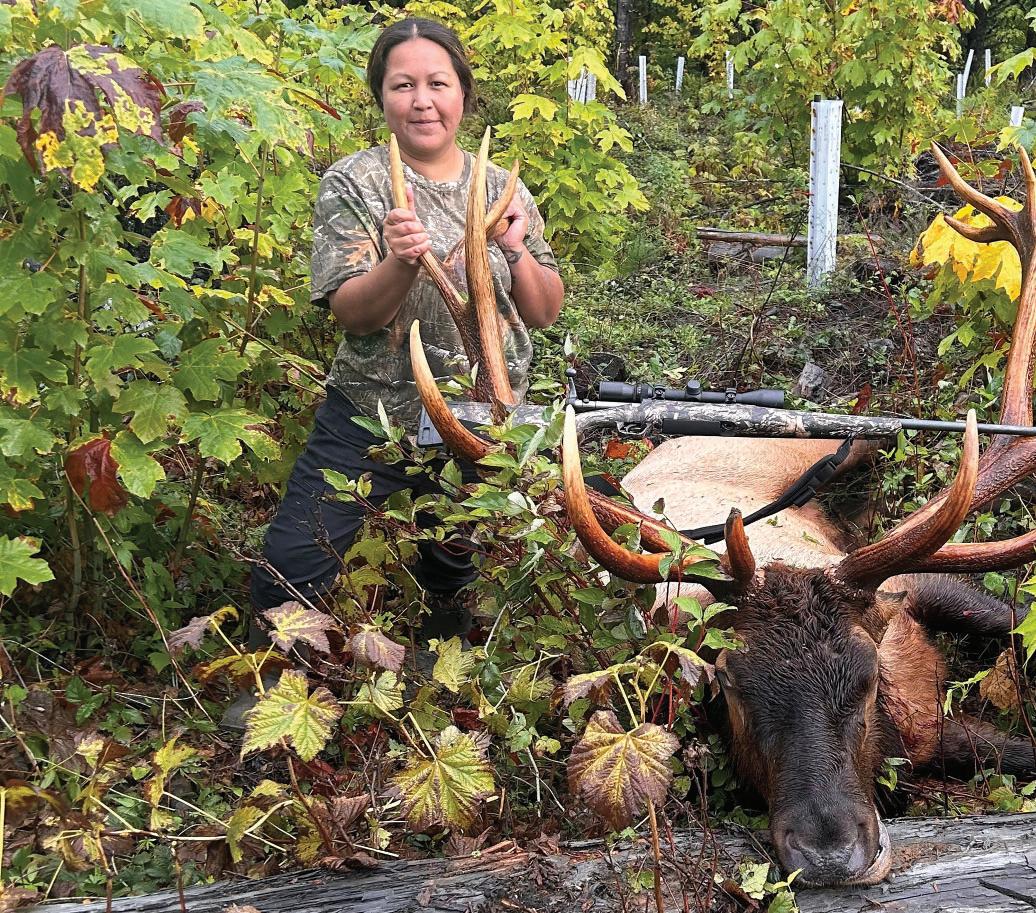

used load up on čamas (delicious treats) and sit together on the logging roads while their grandpas, dads and uncles were on hunts, Hassall shared.
Weeks before Hassall got her elk, she was out on the land scouting locations with her 11-year-old son Riley. She says a lot of the love she has for hunting stems from teaching her children all the things her brother, uncles and grandpa taught her, from gun safety to culture.
“When the fishing season or hunting come, we’re already preparing ourselves. We’re going for dips, we’re washing away the negative energy. We’re not bringing any bad energy into our hunt,” she said.
“We respect the land,” Hassall went on to say. “I come from Tseshaht First Nation, and we respect the territories and remind people to respect the land and be cautious of the area you’re in; be respectful to other hunters and land users.”
The elk Hassall has in her freezer will last her family up to three years, she says, and includes steaks, roasts, elkburger and stew meat.
“It’s so lean. It’s so tender. When it’s ground up and you’re making spaghetti or chili I don’t think people notice the difference and if they do it’s that the meat tastes cleaner, less fatty,” she described. “The roasts are just so tender. They have such a beautiful taste to it.”
Her kids, Riley and Lanaley, appreciate eating traditional food too.
“Ever since (Riley) was young he had to know where his food is coming from. He had challenges eating hamburger and chicken,” said Hassall.
“He loved catching fish and eating it himself. He loved going on hunts and processing the deer. He would always have a story when he was eating his meal,” she continued.
Dick gave most of her portion of the elk away, feeding about 10 other families.
“I shared it with everybody. I shared my half with people that were close to me. I even gave more than half to the band,” said Dick.
Hassall saved the stomach lining of the elk to make traditional skincare and gifted
the heart of the majestic forest animal to an elder.
B.C.’s Roosevelt elk population is stable to increasing
Named for Theodore Roosevelt, the 26th president of the United States (1901-1909), the Roosevelt elk, or ƛuunim in Tseshaht language, is Vancouver Island’s largest land animal, weighing over 1,000 pounds.
Roosevelt elk herds are restricted in B.C. to Vancouver Island and portions of the southwestern mainland. According to the B.C. Ministry of Forests, Lands and Natural Resource Operations, successful transplants of 24 animals from Vancouver Island to the Sechelt Peninsula between 1987 and 1989 helped off-set local declines. There was also one transplant of five animals to Powell River in 1994, according to the ministry.
“The present mainland populations are almost all descendants of 29 elk transplanted from Vancouver Island,” said the BC Conservation Data Centre.
The animal is currently considered to have a “stable to increasing” population with aerial surveys from 2022 estimating the number of Vancouver Island Roosevelt elk at 5,600 to 6,300, according to provincial data.
While the population is stable, Roosevelt elk in coastal forests still remain vulnerable to unregulated hunting, predation and habitat degradation, according to the ministry.
“Over-winter mortality during periodic severe winters, which may become more frequent as a result of climate change, can also significantly reduce elk populations,” said the ministry.
The ministry went on to say that elk populations within the traditional territories of most Nuu-chah-nulth First
Sylvia Dick with the Imperial Roosevelt elk she shot in the Taylor Arm area on Sept. 29. The Tseshaht member used one of the Fir
Leisa Hassall grabs the bull by the horns after a successful hunt on Sept. 27 in the Comox Main area.
r community
Tseshaht’s four elk permits

Submitted photos
st Nation’s four elk hunting permits.
Nations are estimated to be small.
“There are limited sustainable hunting opportunities in these areas as hunting could jeopardize elk conservation,” said the ministry in an email.
For 2025, 16,347 hunters applied for a Roosevelt elk Limited Entry Hunting (LEH) authorization in region 1 (Vancouver Island) and 7,072 applied in region 2 (Lower Mainland), for a total of 23,419, according to the Ministry of Water, Land and Resource Stewardship.
In 2025, there were 187 authorizations issued for Roosevelt elk in Region 1 and 487 in region 2, for a total of 674 or about one for every 35 licensed B.C. resident hunters that applied for a Roosevelt elk LEH received one.
On average, there are about 115 Roosevelt elk harvested in region 1 and region 2, according to the ministry. They say wildlife managers anticipate a similar harvest for 2025.
The ministry said the LEH information provided is specific to licensed B.C. resident hunters and does not consider First Nation harvest intentions that are discussed at government-to-government meetings, and does not consider guided hunters who access quotas issued to guide outfitters.
Roosevelt elk hunting opportunities that are available to licensed hunters are allocated between resident and guided hunters following the Harvest Allocation Policy, said the ministry, and on Vancouver Island, roughly 85 per cent of the harvest is though the LEH process and 15 per cent of the harvest is available to guided hunters through the guide quota system.
Both Hassall and Dick are looking forward to their next Roosevelt elk hunt, but they’ll have to skip next years’ draw – in accordance with Tseshaht’s hunting regulations, members can’t win a Roosevelt elk tag two years in a row.

Relying on traditional food as costs soar
‘Easy meals’ are the cheapest and the best, says Nuu-chah-nulth caterer Lil’ Star Frank
By Nora O’Malley Local Journalism Initiative Reporter
Tofino, BC – Nuu-chah-nulth caterer Lil’
Star Frank took beef off her menu after the price of roast beef climbed to $90 for a couple pieces that would only feed about 15 people.
For potlatches, she needs to create meals for upwards of 500 guests, and lately, her spending at the grocery store topples $3,000 for an event of that size.
“Food… I can’t even explain. I feel like, is my catering even worth it?” she said.
“The beef sure went up in price. Same with flour, we’d be lucky to get it for $10 a sack. Even vegetables, I can’t believe it, like $10 for a bag of apples?”
She says it feels like groceries have “tripled in price” and it doesn’t matter where you shop, from Quality Foods and Costco to No Frills and Super Store, everywhere is expensive – even Walmart.
Fueled by high import duties imposed by the United States and countermeasure tariffs by the Canadian government, grocery price inflation continues to outpace growth in the all-items Consumer Price Index (CPI), according to Statistics Canada.
Coffee has the highest product price increase on the Stats Can CPI tracker, month after month. The price of roasted or ground coffee climbed 34.2 per cent in October compared with October last year.
Tofino’s Common Loaf Bake Shop, known for providing some of the best value meals and drinks in the area, recently upped its price for a cup of coffee from $1.90 to $2.75 or $3.60 if customers ask for a takeaway cup.
Other items on the monthly CPI list to increase in October compared to last year were fresh or frozen beef prices (up 16.8 per cent), bacon (up 8.3 per cent), canned salmon (up 8.7 per cent), eggs (up 3.2 per cent) and lettuce (up 7.5 per cent).
“It shouldn’t be that much,” said Frank. “I rarely see stuff that’s on sale. Sometimes the rice is on sale for $7.”
Frank recently moved from Ahousaht to Nanaimo with her two daughters and three boys in care. She thought it would be cheaper relocating from a rural First Nations community to an urban hub like Nanaimo, but with her increased rent and cost of fuel, she says it’s not.
Her monthly grocery bill for nourishing her five kids is about $1,600. The average monthly cost of healthy eating for a family

of four in Island Health is about $1,366, according to a 2022 report from the BC Centre for Disease Control.
“Homemade cooked meals and baked meals are probably what saves us. My daughter makes, or I’ll make, bread. My kids don’t eat store bought bread,” said Frank, who was the foods coordinator for Maaqtusiis Elementary School in Ahousaht.
“I know eating healthy is costly, but I’d rather buy more fruit every week for my kids than chips and chocolate and pop,” she continued.
Frank serves her kids smoked fish or jarred fish with rice or potatoes at least once a week as the “easy meal”.
“It’s going to be like a two-dollar meal if I have smoked fish and seaweed,” she said. She’s also grateful for the muwač (deer) meat and other game meat she receives from family members.
“What is it going to cost us for eating muwač when the nation gives it to us?” she said.
“You think of our traditional foods, it’s so much healthier. Back in the day we didn’t have all the diabetes, the high blood pressure, the cancer, because we lived off the land. It’s so much healthier than buying meat with so much added to it,” said Frank. Rachel (Dickens) Greening, a registered dietitian and certified diabetes educator for the Nuu-chah-nulth Tribal Council, reiterates.
“Traditional food is always going to be healthier for Indigenous people, not just for nourishing our physical body but also our spiritual being,” said Greening.
“Traditional foods and harvesting, for many people it’s ceremony and a way of connecting to the land and connecting to our relations and our community through the reciprocity,” she said.
She encouraged people to amplify those “easy meals” of fish and rice in a costeffective way by topping it with seaweed or adding fried onion or frozen peas.
“Onions are a great vegetable. They are inexpensive and so nutritious,” said Greening.
The price of onions dropped by 7.3 per cent this October compared with last October and frozen vegetables also decreased in price by 1.9 per cent, according to the Stats Can CPI tracker.
Frank’s latest catering gig on Nov. 22 was a coming-of-age potlatch in Tla-o-quiaht traditional territory on the west coast of Vancouver Island. Her menu was built around a dozen donated turkeys, donated deer meat and features lots of fish choices like baked salmon, cod and halibut.
“You have to have fish at a potlatch,” said Frank, who also bakes all the desserts from scratch.
She can be reached for catering requests at: lilstarfrank@hotmail.com.
Nora O’Malley photos
Nuu-chah-nulth caterer Lil’ Star Frank preps a crumb cake and Dutch apple cake for a 500-person coming-of-age-potlatch in Tofino on Nov. 22.
Rare books give documents for ‘knowledge holders’
History books on Nuu-chah-nulth culture have proved critical in court cases as evidence for Aboriginal
By Denise Titian Ha-Shilth-Sa Reporter
West Coast Vancouver Island, BC – Nuuchah-nulth history books can be hard to find and will command a steep price if they are rare and in good condition. That is the nature of the rare books business –the harder it is to find, the more value it has.
An internet search for the most valuable Nuu-chah-nulth history book doesn’t produce a title. Instead, the searcher will get a description of what collectors are looking for in terms of rare and valuable books.
“...value in rare books depends heavily on factors such as edition, condition, and provenance. However, one of the most historically significant and sought-after works related to the Nuu-chah-nulth people is an early 19th-century account of captivity,” states one appraiser.
‘The Adventures of John Jewitt: Only Survivor of the Crew of the Ship Boston, During a Captivity of Nearly Three Years Among the Indians of Nootka Sound in Vancouver Island’ is a foundational text for anyone researching the early contact period of the Nuu-chah-nulth people (then referred to as Nootka Sound Indians).
Written by John Rodgers Jewitt, who was held captive with his shipmate John Thompson by the Mowachaht for 28 months starting in 1803, the original journal served as the framework for subsequent books about the incident published over the decades.
Hailed as one of the earliest firsthand accounts of the Nuu-chah-nulth by a European, the book detailed the day-today struggle of learning about and fitting into Mowachaht culture in their struggle for survival.
While there are several versions of the story, it is the early first editions of this work that are most valuable. The earliest journal was brief and maybe even mundane as Jewitt described daily life with the Mowachaht.
In the years following Jewitt’s rescue, books based on the journal were published and a play was written. There is a belief that Jewitt and/or the publishers embellished some portions of the story to make it more dramatic, more interesting to the paying public.
Phrase of the week:

While more books from contemporary authors and historians continue to be published, those older, out of print books about Nuu-chah-nulth history are getting harder to find.
For example, an attack on another tribe in which Jewitt and Thompson killed or took prisoners was described in a book but was not mentioned in the original journal. Other examples were Jewitt’s later accounts of his preferential treatment by the “king” Maquinna like his “forced marriage” to an Ehattesaht princess.
Published in 1807, ‘A journal kept at Nootka Sound,’ is described as Jewett’s own version without editorial embellishments. One copy is available online for more than $1500 CAD.
According to book appraisers, those in excellent condition with original plates and binding are highly valuable on the rare book market. Even more valuable if signed by the author.
David Ellis is a Vancouver Island-based book collector who buys and sells Nuuchah-nulth history books, among others. But after decades of travelling book sales, Ellis, now 74, is putting his entire book collection up for sale so that he can enjoy a quiet retirement.
A former commercial fisherman and community fisheries planner, Ellis took over his father’s rare book collection. He even co-wrote a book.
“With Nuu-chah-nulth I wrote Teachings of the Tides with Luke Swan when I was very young, and had to know what had been written over the last 100 years on
Nuu-chah-nulth,” he told Ha-Shilth-Sa. Published in 1981, Teaching of the Tides: Uses of Marine Invertebrates by the Manosaht People was co-written with Luke Swan, who was born in 1893. Even this book has joined the rare book list. Used, paperback copies can still be found online for about $100.
“It was 10 years later (after publishing the book) when my dad passed when I took over all of his book collections and dropped my career in community fisheries planning to become a bookseller,” Ellis said, adding that he got into the habit of knocking on band office doors, telling them, “I have expensive but good books for you!”
“Yes, I have had a lot of wonderful adventures visiting First Nations,” he shared.
The Nuu-chah-nulth collection started by Ellis’s father has been expanded, with Ellis buying multiple copies of some books.
It was a rare book, likely purchased from Ellis’ collection, which helped five Nuu-chah-nulth First Nations win the Ahousaht et al. fisheries court case, which recognized their right to commercially harvest and sell fish from the nation’s respective territories. He said First Nations often hire legal firms and sometimes one good history book is all that is needed to
prove the case.
rights
He said it was a rare book that won the case. Ellis is referring to ‘Scenes and Studies of Savage Life’, written by Gilbert Malcolm Sproat in 1868. The book, said Ellis, carefully described how Nuuchah-nulth fishermen loaded their canoes with halibut to sell in Victoria, BC.
“It was the knowledge contained in this book that makes it valuable,” he said.
James Swan Uukwaqum is the grandson of Luke Swan and is buying transcripts of the voice recordings his grandfather made in preparation for the book. According to Ellis, Swan makes a point that gaining traditional knowledge through books is not the best way to learn.
“And I agree this is not the best function of books. Their function is ‘back up’ (other forms of knowledge acquisition),” said Ellis.
He has had some success in selling entire collections of historic Indigenous history books to interested First Nations. Ellis says his major buyers are “knowledge holders” that use the books for reference or to keep in resource centres.
“Now it’s time to let my book collections go for all of British Columbia and the Northwest Territories,” he said.
Ellis says he’s noticed that some of his usual big buyers, like knowledge holders and school boards, are not buying as many books as they used to. He wondered if there was less money available for books. It could be that some books are now available online in digital format at a lower price. But there’s something special about having a rare, hard copy of that hard-to-find book.
There are dozens of Nuu-chah-nulth history books available for purchase. Some are written by anthropologists, historians and even Nuu-chah-nulth elders. Noteable Nuu-chah-nulth authors include Ha’wiih like Ahousaht’s Earl Maquinna George, Umeek (Dr. Richard Atleo of Ahousaht) and Pacheedaht’s Charlie Queesto Jones.
Other notable Nuu-chah-nulth authors are Dr. George Clutesi (Tseshaht), Dr. Charlotte Cote (Tseshaht), Peter Webster (Ahousaht), and Luke Swan Sr. (Manosaht/Ahousaht).
While more books from contemporary authors and historians continue to be published, those older, older, out of print books are getting harder to find.
%aya%iš%a> mum%mumqwih %aya%iš c’iskmis cimqstitniš%a> %uu%ip
Pronounced ‘Ahh yaa ish alth moo moo qwii hir ahh yah nuk ish. Chees k mis chim stoo k nis ish alth oo ii ip’, it means ‘Hunting season is here! Elk brings lots of meat for the winter and feeds lots of families. Supplied by ciisma.

Illustration by Christine Sparks
Denise Titian photo
November bills put First Nations rights into question
MLA Dallas Brodie and MLA Jordan Kealy’s ‘rage-baiting’ bills get blocked from first reading in the legislature
By Nora O’Malley Local Journalism Initiative Reporter
Victoria, BC – This November B.C. MLAs punted into oblivion a pair of private members’ bills concerning First Nations.
On Nov. 19, Independent MLA for Peace River North Jordan Kealy put forward the Declaration on the Rights of Indigenous Peoples Statute Repeal Act. His bill was blocked from advancing by a vote of 48-43.
On Nov. 20, OneBC MLA for Vancouver-Quilchena Dallas Brodie pitched the National Day for Truth and Reconciliation Statute Repeal Act, which introduced a motion to repeal the National Day for Truth and Reconciliation as a provincial holiday in B.C. Brodie’s bill was quashed with 86 ‘nays’ and three ‘yeas’.
Spencer Chandra Herbert, minister of Indigenous Relations and Reconciliation and NDP MLA for Vancouver-West End, called the two pieces of legislation “ragebaiting”.
“In the face of divisive and harmful rhetoric from these MLAs, we won’t stop the fundamental work of reconciliation. And we won’t stop building a province that works for every British Columbian,” said Herbert in a media release.
Health Minister and NDP MLA for MidIsland Pacific Rim Josie Osborne said she fully supports calls for Brodie’s resignation, or for her constituents to recall her.
“The hateful agenda that she’s advancing in the House were not known by and do not reflect the ideas of the people who voted her in. It’s unfortunate that the BC Conservatives allowed someone who openly holds such racist, anti-Indigenous views past their vetting process in the first place,” said Osborne.
The First Nations Leadership Council called for Brodie’s resignation at the beginning of the month.
“The actions of MLA Brodie and her party, OneBC, in actively promoting and using public funds to create and distribute Residential School denialism and anti-
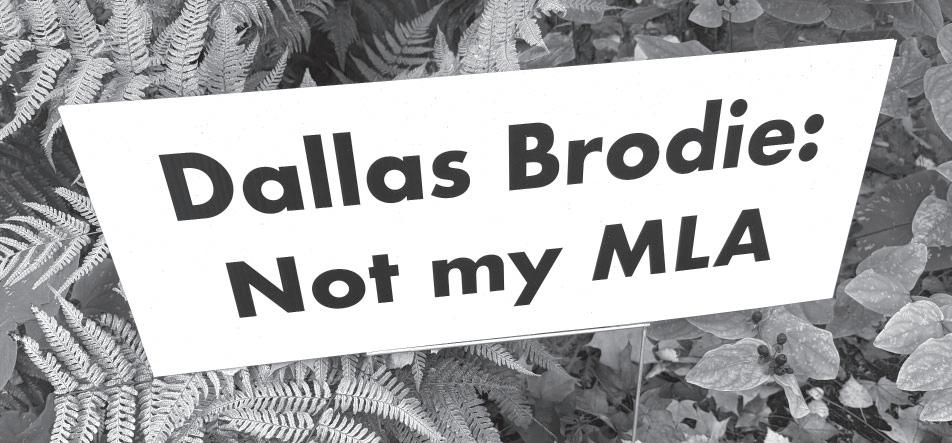
never looking away from that truth,” she said.
Brodie’s riding of Vancouver-Quilchena falls within unceded Musqueam territory. Musqueam’ Indian Reserve No. 2 is located at the mouth of the Fraser River and sandwiched between the Shaughnessy Golf & Country Club and the Point Grey Golf & Country Club.
Musqueam Indian Band Chief Wayne Sparrow said he has not spoken with MLA Brodie regarding her “deeply disturbing” views on reconciliation and residential school experiences. Brodie has also not reached out to him.
“Musqueam condemns the ongoing anti-Indigenous rhetoric and attempts to take political action that directly contravenes the DRIPA action plan and risks our ongoing efforts at reconciliation,” said Chief Sparrow in an email. “We wholeheartedly support the First Nations Leadership Council’s call for the immediate resignation of Dallas Brodie who is inciting divisiveness, racism and hatred.”
In the 2024 provincial election, Brodie won her seat as a Conservative candidate with 11,464 votes, or a 51.6-per-cent
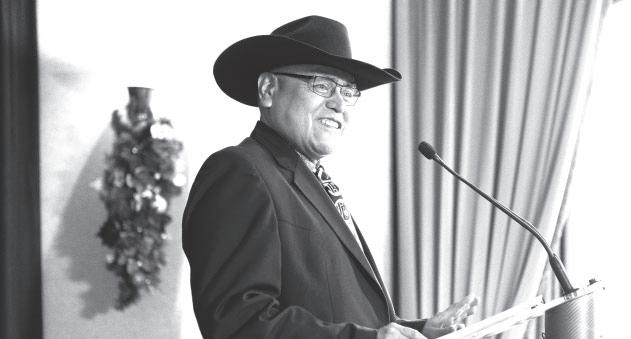
Indigenous rhetoric – both within and outside the Legislative Assembly, have shown division, fear and hatred,” said BC Assembly of First Nations (BCAFN) Regional Chief Terry Teegee in a Nov. 3 media release.
Osborne stressed that she fully supports the National Day for Truth and Reconciliation.
“It’s not just symbolic, it is a necessary acknowledgment of the real and painful history in this province: the displacement of Indigenous Peoples, the denial of basic rights, the trauma and abuse in residential schools, and the children who never came home. Recognizing this day is an expression of our commitment, as a government and as a society, to reconciliation and to
share. The NDP runner-up Callista Ryan garnered 8,649 votes.
A constituent of Vancouver-Quilchena launched a petition calling for Brodie’s resignation shortly after the politician was seen in an interview seemingly mocking the testimony of residential school survivors. That interview led to Brodie being kicked out of the Conservative Party of B.C.
With Brodie’s latest movements in legislature, the Vancouver-Quilchena recall petition has had renewed interest. Currently, 1,858 people have signed the petition citing two main concerns: Brodie’s residential school denialism and the fact the constituents did not vote for her as an Independent or a member of OneBC.
“People are just disgusted and fed-up with her,” said the Vancouver-Quilchena constituent and author of the petition, who has asked to remain anonymous due to fears of violent retaliation and doxing. “Multiple people who have supported the petition have reached out to her. She doesn’t respond to constituents, and she doesn’t have an office in the riding. She is using public funding for things that are not appropriate,” said the VancouverQuilchena constituent. “Her political beliefs are not within what is matching the values of the riding at this point. We don’t want to normalize this denialist behaviour in the legislature. We believe there should be an election.”
Under Elections BC’s Recall and Initiative Act, a registered voter must wait 18 months after a general election to apply for a recall. The Vancouver-Quilchena constituent said most of the members of their non-partisan group are nonIndigenous and they are in touch with Musqueam Indian Band. The group will initiate the recall process for Brodie in April 2026.
‘We aren’t after private land’ MLA Kealy’s said his bill to repeal the Declaration on the Rights of Indigenous Peoples Act (DRIPA), which was passed unanimously in 2019, was brought forward as “a path to bring people together instead of dividing them.”
Kealy, a former Conservative member who lives in the farming community of Cecil Lake on Treaty 8 First Nations territory, said on his social media the NDP government is currently using DRIPA as a way to “shut down or control our resource sector” and that he brought the bill forward to initiate a discussion on “how they will deal with First Nations, with the treaties, with resources.”
Most recently in October, four Treaty 8 First Nations from northwestern Alberta –the Beaver First Nation, Dene Tha’ First Nation, Little Red River Cree Nation, and Tallcree Tribal Government (collectively the Nations of the North Peace) – filed a historic judicial review against the Government of Alberta over its decision to transfer 15,000 acres of Crown land to Mackenzie County for agricultural expansion.
“This is not just about one land sale,” said Chief Wilfred Hooka-Nooza of the Dene Tha’ First Nation in an Oct. 6 news release issued by the Nations of the North Peace. “This is about a pattern – stretching back to the 1990s – where Alberta continues to erode our traditional territories without considering the cumulative impacts. Alberta has breached its duty
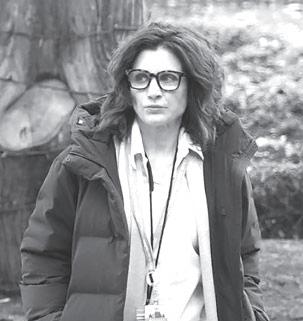
to consult and ignored our rights under Treaty 8.”
Kealy said with the introduction of Aboriginal Land Title there is a “loss of security around fee simple land and private property”.
“We are going into unchartered territory and for me it’s sickening,” Kealy posted on his social media.
About a year ago on Dec. 12, 2024, Mowachaht/Muchalaht First Nation (MMFN) filed a title claim in the British Columbia Supreme Court. Like the Haida Nation, Quw’utsun (Cowichan), Nuchahtlaht and many other nations across Canada, MMFN is seeking a declaration of Aboriginal Title to their historical lands.
“We aren’t after private land,” said MMFN Hereditary Chief Jerry Jack, who served 21 years of police service with the RCMP and is a director with the BCAFN.
“From my understanding, we don’t have any plans of kicking people off. We want acknowledgement that we own this land from the beginning of time,” he continued.
When asked about property assessments, Jack said: “I would imagine nothing would change. The value of the property will stay the same, their businesses, their farms, whatever they have.”
MMFN territory is located on Nootka Island, a place of first contact with Europeans, where Captain Cook first landed.
“To me that’s where all my troubles started. We owned this land before anybody showed up and now we have to go to court to prove that we did,” said Jack.
While Jack stands in solidarity with the BCAFN and calls for Brodie’s resignation, he expressed sympathy for the politician who describes herself as “one of Canada’s leading voices on Indigenous issues”.
“I feel bad for the lady. It’s pure racism to me. I try to comprehend where she’s coming from, but who knows,” said the hereditary chief.
Submitted photo
Constituents of Vancouver-Quilchena launched a petition calling for Brodie’s resignation shortly after the MLA was seen in an interview seemingly mocking the testimony of residential school survivors.
Dallas Brodie
Geoff Howe photo
Mowachaht/Muchlaht First Nation Hereditary Chief Jerry Jack talks to media during a December 2024 announcement.
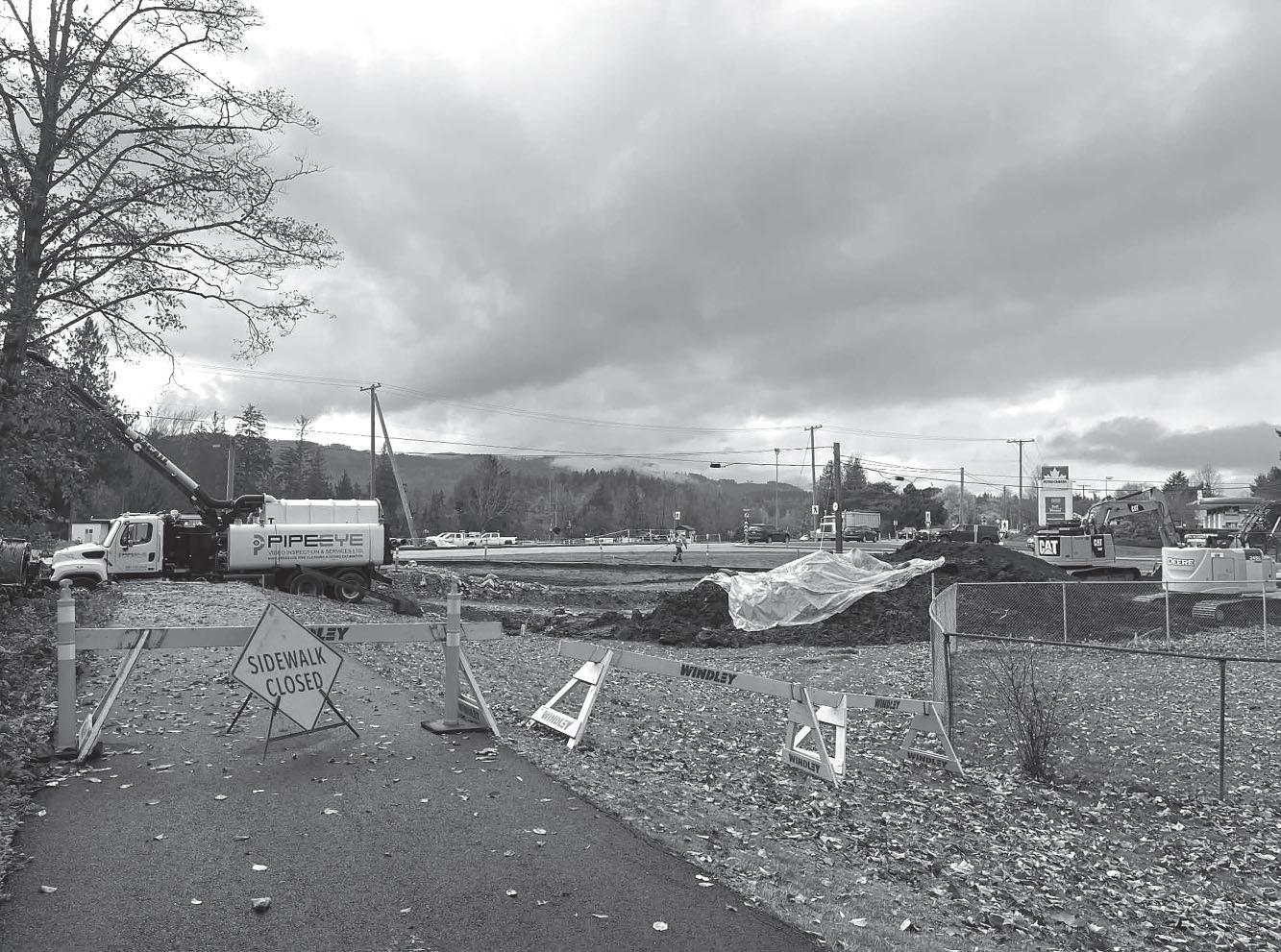
Construction begins for Clutesi Haven roundabout
A detour will run through the marina’s parking lot during the winter, as project aims to improve traffic
By Denise Titian Ha-Shilth-Sa Reporter
Port Alberni, BC – Travelers using River Road can expect delays and detours as work begins this fall on a new roundabout to be installed at the intersection of River Road and Beaver Creek Road in Port Alberni.
For years the intersection, which also involves access to Clutesi Haven Marina, has been troublesome during times of heavy traffic through the Highway 4 corridor. There are no traffic lights at the intersection, making left turns from Beaver Creek Road or the marina onto Highway 4 difficult.
In a statement from MLA Josie Osborne, the new roundabout will improve safety, reduce congestion and make travel easier for residents, marina users and visitors to Vancouver Island’s west coast. Access to Clutesi Haven Marina will be improved with wider, reconfigured entrances to reduce highway congestion and support commercial and recreational fishers.
“New multi-use paths, sidewalks, and bike-friendly shoulders will also make the area safer and more accessible for people walking and cycling,” reads the statement.
A project of the BC Ministry of Transportation and Transit, the roundabout was designed in consultation with the City of Port Alberni, the Alberni-Clayoquot
Regional District, the Port Alberni Port Authority along with Hupacasath and Tseshaht First Nations.
“This project aims to improve traffic flow and enhance safety at this critical intersection,” stated the ministry.
Valued at over $8 million, the project’s contract was awarded to Windley Contracting Ltd.
New traffic safety signs are already up around the area as land has been cleared in preparation for the widening of the road. According to MLA Osborne, construction is going into full swing.
“People travelling through Port Alberni will be redirected to a temporary detour through Clutesi Haven Marina parking lot,” she said.
The detour through Clutesi Haven Marina will take up a portion of the large parking lot, but users of the area will continue to have access to the boat launch and the southeast portion of the lot.
In addition to the detour, travellers will see occasional single lane alternating traffic which may occur between the hours of 7 p.m. and 6 a.m.
The detour is expected to remain in place until March 2026. The project is expected to be complete in summer 2026. Updates on project-related road closures or schedules will be posted in advance on www.gov.bc.ca/highway4beavercreek and DriveBC.ca.


Winter Wonderland
Monday December 8th –3:30pm-4:30pm
NTC Department of Health presents the Winter Wonderland Family skate. Open to Nuu-cha-nulth children, youth and their families. Children under 12 must have adult supervision. Free admission and skate rental. Light snacks provided. Door prizes! For more information call 250-724-3939
NCN Mental Health Counselling
Tuesdays and Thursdays 8:30am – 4:30pm
4841 Redford Street, Port Alberni
NCN Mental Health Services – DropIn Counselling with Margaret Bird, Registered Clinical Counsellor and Play Therapist. For on and off reserve

&Community Beyond



members of all ages of the Nuu-chahnulth Tribal Council. Call (250) 724-3939 to book your appointment.
Stirring up Connections
Every Friday – 10am –12:30pm
NTC Kitchen – 4841 Redford Street
A warm and welcoming cooking group designed just for parents! Whether you’re a seasoned home chef or just learning how to boil water, this group is all about sharing recipes, laughter, and stories while preparing simple, nourishing meals together. Each session will feature: Easy, budget-friendly recipes; Tips for cooking with kids and picky eaters; Space to connect with other parents over food and family life. Contact 250-724-3939 for questions.


On Nov. 17, 2000 a graduation ceremony was held for eight students in the region’s first comprehensive training program focused on shellfish aquaculture. This program, developed and coordinated by Alberni-Clayoquot Community Skills Centre Society, filled the gaps that the shellfish industry was missing.
In February 1999, Neil Jones, the society’s manager, attended a one-day conference on the future of the shellfish industry in the Clayoquot and Barkley sounds. After this conference he realized that more training would be
Local students leave their shells needed for this future to be possible, as there were no comprehensive programs being offered anywhere. With a goal in mind the program came to fruition with gathered content from existing shellfish farmers, contracted resources from Malaspina College, North Island College and the BC Shellfish Growers Association. Government experts and business owners delivered special sessions for the students. This collaboration resulted in a 10-week program that covered everything from applying for a tenure to operating a full-scale operation.
Chloe Wangler photo
Crews work on a detour through the Clutesi Haven Marina parking lot, which will enable the construction of a roundabout to replace the existing intersection of Highway 4 and Beaver Creek Road in Port Alberni.
roundabout
Employment and Training Opportunities

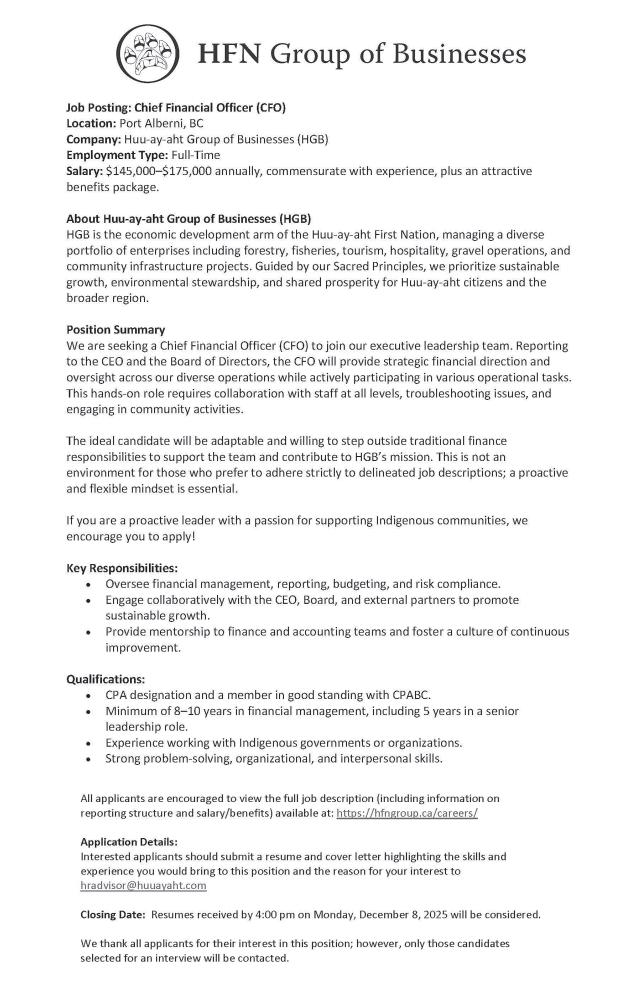

Port Alberni Friendship Centre Volunteers Needed
Need work experience? The Port Alberni Friendship Centre is looking for interested applicants for various positions. Call 250-723-8281


Drift logs harming intertidal ecosystems, says study
Analysis
By Antonella Medina Arias Ha-Shilth-Sa Contributor
Victoria, BC - Logs and branches that wash ashore, known as drift logs, are a common sight along the coast of Western Canada. Often used as natural benches and firewood, it’s easy to accept them as part of the scenery.
However, a recent study published by UVic biologist Dr. Tom Reimchen and two of his students, Esteban Pérez Andresen and Melanie Marchant, reveals that drift logs are a significant cause of the destruction of intertidal ecosystems over the coasts of Vancouver Island and Haida Gwaii.
“These logs that are on the beach, many of them are brought into motion again, and they are dragged off the shore by the waves. Then they drift and they’re dragged in,” said Reimchen. “These logs abrade over the [rocky shores] like sandpaper, back and forth. So, all those things that create so much diversity on shore, like barnacles and mollusks, get eliminated.”
The research revealed that up to 80 per cent of the barnacle and mollusk population, key intertidal foundation species, are extensively degraded due to constant abrasion from logs in their rocky-shore habitat.
The
first portion of data gathering involved using Google Earth to view satellite images of the coasts of Vancouver Island and Haida Gwaii, where Pérez Andresen recorded the number of logs on beaches over the course of a decade, starting in 2016. As the pictures were not taken for that purpose, the low resolution resulted in the loss of most of the data from earlier years.
Another part of the study involved using photos from the BC archives of the first settlements on Lake River Island to count the number of logs along the coast. The result showed an 800- per-cent increase in drift logs on beaches since the 1850s, as more logs from natural and human sources accumulated over time.
After satellite data collection, the team visited the local island to observe the damage. During their observation, the team divided the rocky shores into three areas to analyze how much abrasion drift logs occasioned. The lower part, usually covered by water except on extreme low tide, was covered by barnacles. However, the middle part was utterly devoid of barnacles, and the upper part had them only in crevices.
Around 90 per cent of drift logs remobilize during winter storms, breaking
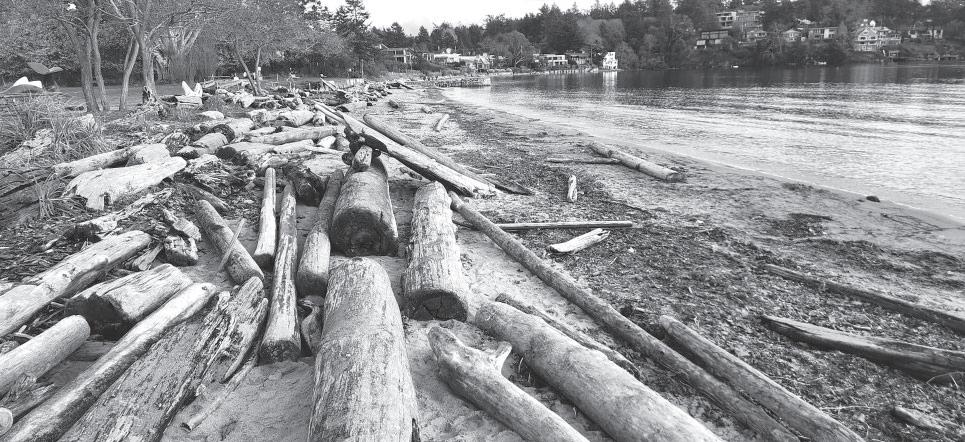
Logs gather at the shore of Cadboro-Gyro Park in Victoria. A new study from the University of Victoria
into smaller pieces as waves break them. Looking inside the crevices, where barnacles are usually protected from the bigger logs, the team found smaller pieces of logs destroying the organisms within.
Migratory birds like shorebirds, small fish that live in tides, and forest animals like raccoons and bears all rely on this ecosystem as a source of food. In the case of shorebirds, the degradation of the intertidal ecosystems contributes to a population decline of 5 to 20 per cent.
“Barnacles are a foundation species, aside from being themselves food for other organisms for the higher parts of the food chain. They host a lot of different organisms and invertebrates,” said Pérez Andresen. “They are kind of like trees, it’s a micro habitat where they protect a lot of invertebrates. . . when they get destroyed [so do those] all little things.”
From the 22 shores of Southern Vancouver, the study classified 497 drift logs by source. Eighty-five logs (17 per cent) were identified as natural origin, and 118 (23.7 per cent) were ambiguous due to the erosion on both sides of the logs and the absence of root systems. However, 294 (59.2 per cent) were classified as sawcut, with cut ends and lacking a root system, indicating their human origin.
Dr. Reimchen mentioned that a way to reduce the amount of drift logs in the future is to make it more expensive for logging companies or transportation companies to lose logs. Opening dialogue with policymakers to reduce log loss would be another way to reduce drift logs in the future.
“Timber is so valuable right now, and

there must be a sort of economic incentive to make sure this doesn’t happen or it is greatly reduced,” said Dr. Reimchen.
“[The Ministry of Forest] would be a better source of insight on what [to do] as to being recognized that this is a serious issue that wasn’t recognized before. Maybe that will facilitate attention to the issue, and they might be able to provide real [solutions].”
While there is no clear next step, both Dr. Reimchen and Pérez Andresen are drawing more public attention to the issue. More attention means better im-
age quality, enabling more efficient log counting along the West Coast. Another way to reduce drift logs is to rehabilitate beaches by using them to stabilize soil in sandbags, thus reducing the number of logs within the ocean’s reach.
“The more people recognize this is an issue, the more if they complain, we can do something about this by talking to policymakers,” said Pérez Andresen.
To see the full research, published under Marine Ecology, please visit: https:// onlinelibrary.wiley.com/doi/10.1111/ maec.70054.
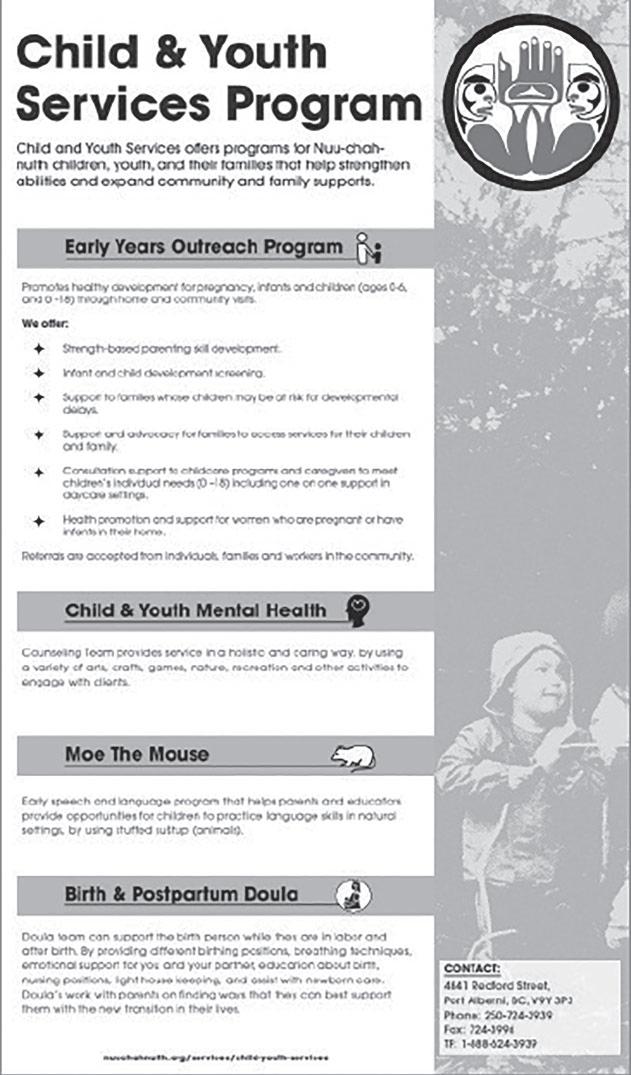
Antonella Medina Arias photo
finds that most drift logs become dislodged during storms, harming barnacles and molusks.
Escalating lumber tariffs push B.C. to look East
Hopes grow for more exports to Japan, after Trump-era levies on Canadian wood products reach 45 per cent
By Eric Plummer Ha-Shilth-Sa Editor
British Columbia is looking to the Far East to find more of a future for the forestry industry, as the sector continues to be hammered by escalating tariffs from its biggest trading partner.
US duties on softwood lumber exported from B.C. and the rest of Canada tripled this year, growing to an average of 45 per cent after President Donald Trump imposed an additional 10-per-cent this fall. This means that lumber sold to American customers is 45 per cent more expensive south of the border with the tariffs that collect this additional revenue for the U.S. Treasury.
Canadian lumber accounts for almost 85 per cent of what the U.S. imports, making up nearly one quarter of the available supply in the United States. This market share has unfairly disadvantaged American operations, according to the U.S. Lumber Coalition, which accuses Canada of unfairly subsidizing its industry.
“Canada’s insistence on protecting its excess capacity and associated Canadian jobs means shipping 60 to 90 per cent of that lumber into the U.S. market at the direct expense of U.S. jobs,” stated the coalition’s Executive Director Zoltan van Heyningen. “Canada should reverse its massive lumber subsidy programs and should stop treating the U.S. market as its dumping ground for Canadian lumber.”
British Columbia exports more lumber than any other province, with 78 per cent
“The system depends on a certain amount of fiber moving through the system, and it’s a heck of a lot more than what’s moving through right now”
~ John Jack, chief councillor Huu-ay-aht First Nations
of this wood headed to the United States, according to the province’s figures from the first eight months of this year. Over this same period nearly $4.4 billion worth of forestry products were sold from B.C. to American customers, accounting for 58 per cent of the industry’s total value of exports.
But those tied to forestry fear the growing tariffs will accomplish exactly what they are intended to do: discourage American companies from buying B.C.’s wood products.
“There are some buyers in the United States that are absorbing the 45 per cent. But the real questions is, will they absorb that forever?” asked Minister of Forests Ravi Parmar. “This is unfair. Russia has better access to the United States market than Canada does.”
Parmar spoke on Nov. 12 amid a weeklong trade mission to Japan and South

On Nov. 11 in Tokyo Forestry Minister Ravi Parmar and B.C. forestry sector delegates visited Shinohara
(above and below) a post-and-beam pre-cut factory serving Japan’s residential and commercial markets.
Co. is a long-time buyer of B.C. coastal hemlock and Douglas-fir and plays a key role in promoting Canadian forest products in Japan.

Korea. Accompanied by 61 other delegates, this was the largest forestry trade trip to Asia the B.C. government has undertaken, with seven representatives from First Nations or First Nations-owned businesses.
“Today the United States is redefining relationships with its trading partners.
Tariffs are putting uncertainty across the global economy,” said Parmar. “We haven’t diversified fast enough.”
In 2024 B.C. sold $889 million of forestry products to Japan, while exporting $239 million to South Korea.
The province hopes to increase this by building on partnerships with the South Asian countries, including playing a part in the 300,000 hotel rooms Japan aims to construct over the next five years for its tourism industry.
But for a sector that has for generations geared itself to American markets, some


serious adaptions will be needed for this shift to Asia. Last year the United States bought three quarters of B.C.’s lumber exports, but just 11 per cent of the province’s unprocessed logs. China took in 51 per cent of these raw logs, totalling 1.4 million cubic metres, while Japan bought another 30 per cent of the log exports.
Processing lumber keeps B.C. mills operating, a dynamic that will need to be considered to prevent more facility closures in the province.
Over the first eight months of 2025 forestry exports to the U.S. dropped by just four per cent, but many in B.C. expect this to worsen in the coming months as the tariffs take hold.
“We’re looking at a difficult situation because so much of our timber, so much of our lumber, was ultimately bound for United States markets,” said John Jack, chief councillor of the Huu-ay-aht First Nations. “Because of the tariffs that’s dried up demand.”
North of Huu-ay-aht territory sits Port Alberni, a small city that through the 20th century built a reputation as the hub of the region’s logging activity. But over the last generation the town has seen a succession of mill closures.
“The system depends on a certain amount of fiber moving through the system, and it’s a heck of a lot more than
what’s moving through right now,” said Jack. “It really disrupts the ecosystem of forestry in the Alberni Valley and on Vancouver Island. There needs to be wood going through the mills on the Island, including in the Alberni Valley, to help keep things like the paper mill operational.”
Forestry is a critical revenue generator for many coastal First Nations. Through a combination of salvaging, harvest licences, tenures and partnerships with companies operating in its territory, the Tseshaht counts on forestry to be its top revenue generator, complementing the government funding that covers 60 to 75 per cent of the First Nation’s operations and services for its members.
Up to three quarters of the Huu-ay-aht Group of Businesses’ revenue comes from forestry, but Jack foresees the need to find other markets for this to continue.
Last summer he accompanied Premier David Eby on a trade mission to Japan.
“I’m a huge proponent of diversifying our markets because then we’re not so reliant on a country whose decision makers are not necessarily predictable and stable. I think of all the countries in the world, in places like Japan and South Korea stability are virtues,” he said. “I find that compatible with Maa-nulth culture.”
Province of B.C. photos
Shoten Co.,
Shinohara Shoten
John Jack
